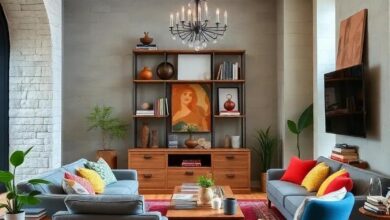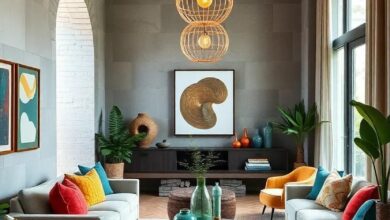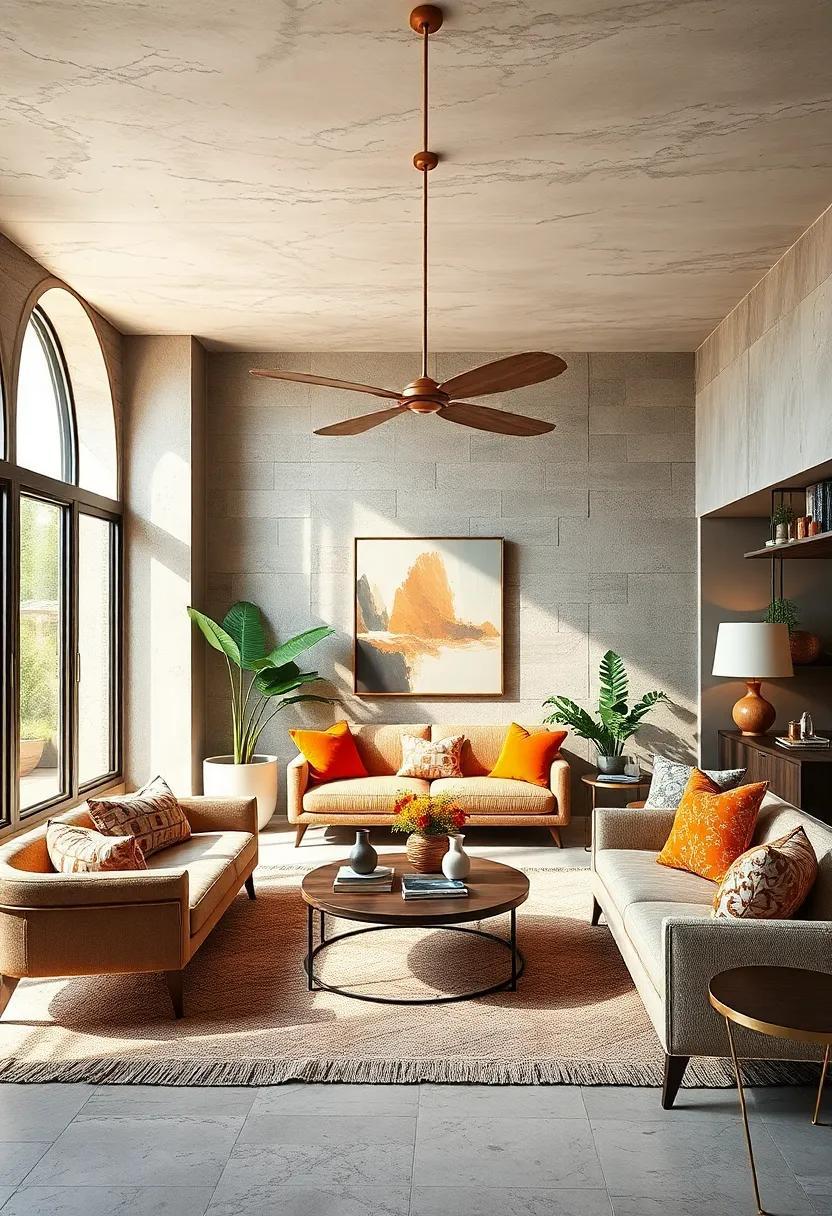
29 Tips for Crafting Harmony in Eclectic Interior Design: A Balanced Approach
Are you ready to transform your living space into a harmonious haven of eclectic design? Embracing the beauty of diverse styles can infuse your home with character adn warmth, but it can also lead to a visual cacophony if not carefully curated. in this listicle, “,” we’ll explore a treasure trove of insights that will guide you in blending various aesthetics, textures, and colors seamlessly. From understanding the fundamentals of balance and proportion to incorporating focal points and personal touches, our collection of tips will empower you to create an inviting and cohesive atmosphere that reflects your unique personality. Whether you’re a seasoned designer or a curious novice, expect to gain practical advice that will elevate your interior design game and turn your eclectic dreams into a beautifully orchestrated reality. Let’s dive in!
Embrace a Color Palette: Select a cohesive color scheme to tie eclectic elements together and create visual harmony
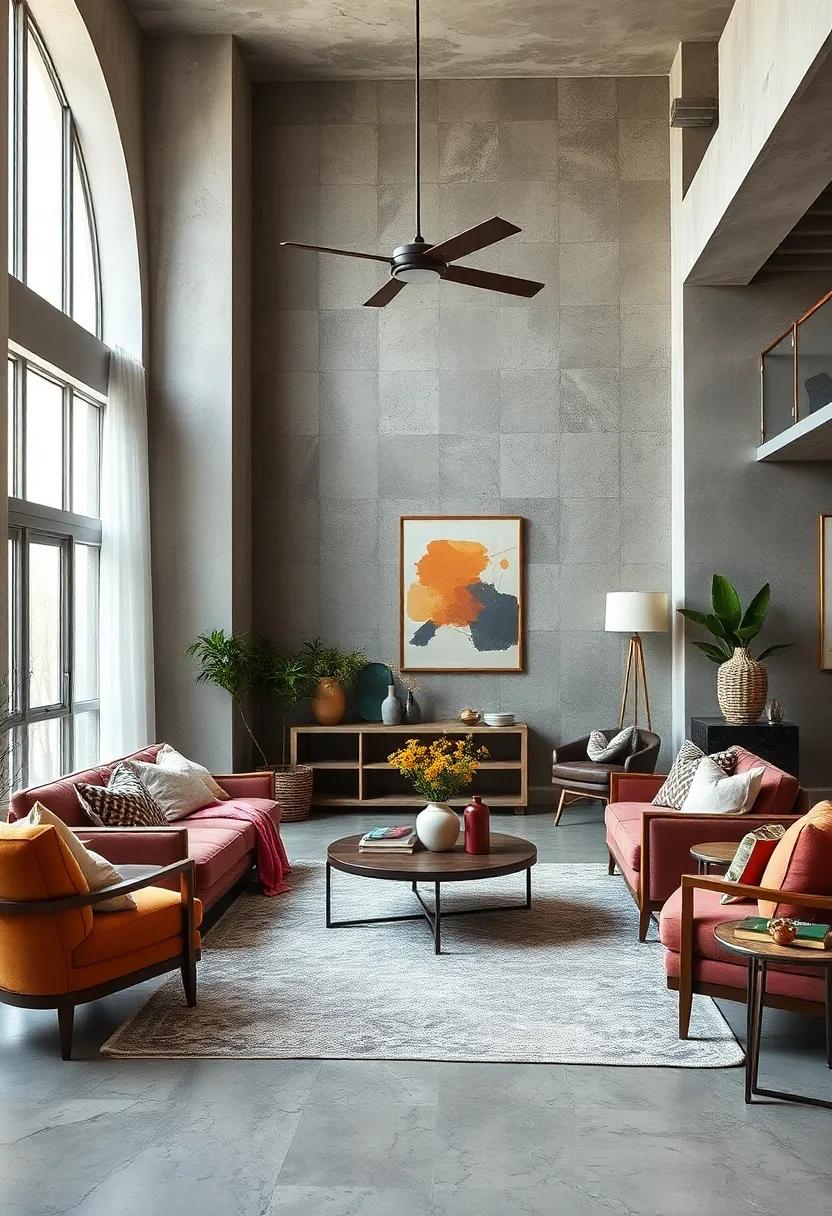
The foundation of any accomplished interior design lies in its color scheme. When curating eclectic elements,selecting a cohesive palette helps to unify them and bring visual harmony to your space. Opt for a combination of colors that resonate with your personality but also work together seamlessly. Consider choosing a dominant color that appears throughout the room, supported by accent or secondary colors to highlight specific features or items. This approach not only simplifies your design choices but also ensures that different styles and eras feel connected rather than disjointed.
To help you visualize your chosen palette, create a color swatch board using materials or images that represent your selections. Incorporate neutral tones as a base to allow your eclectic pieces to shine without overwhelming the senses. Below is a simple table showcasing possible color combinations that can evoke varied moods and styles:
| Color Scheme | Vibe |
|---|---|
| Soft Pastels | Calm and airy |
| Rich Jewel Tones | Luxe and dramatic |
| Earthy Neutrals | Warm and inviting |
| Bold Primary Colors | Playful and energetic |
remember that your space’s color palette sets the mood. It can shift from serene to vibrant merely through a few select shades.Whether you opt for muted tones that whisper elegance or bold hues that shout personality, the key is consistency throughout the room.By thoughtfully applying your chosen colors across walls, furnishings, and accessories, you can create an eclectic milieu that feels perfectly pulled together.
Mix Textures: Combine various textures, such as wood, metal, and fabric, to add depth and intrigue to your space
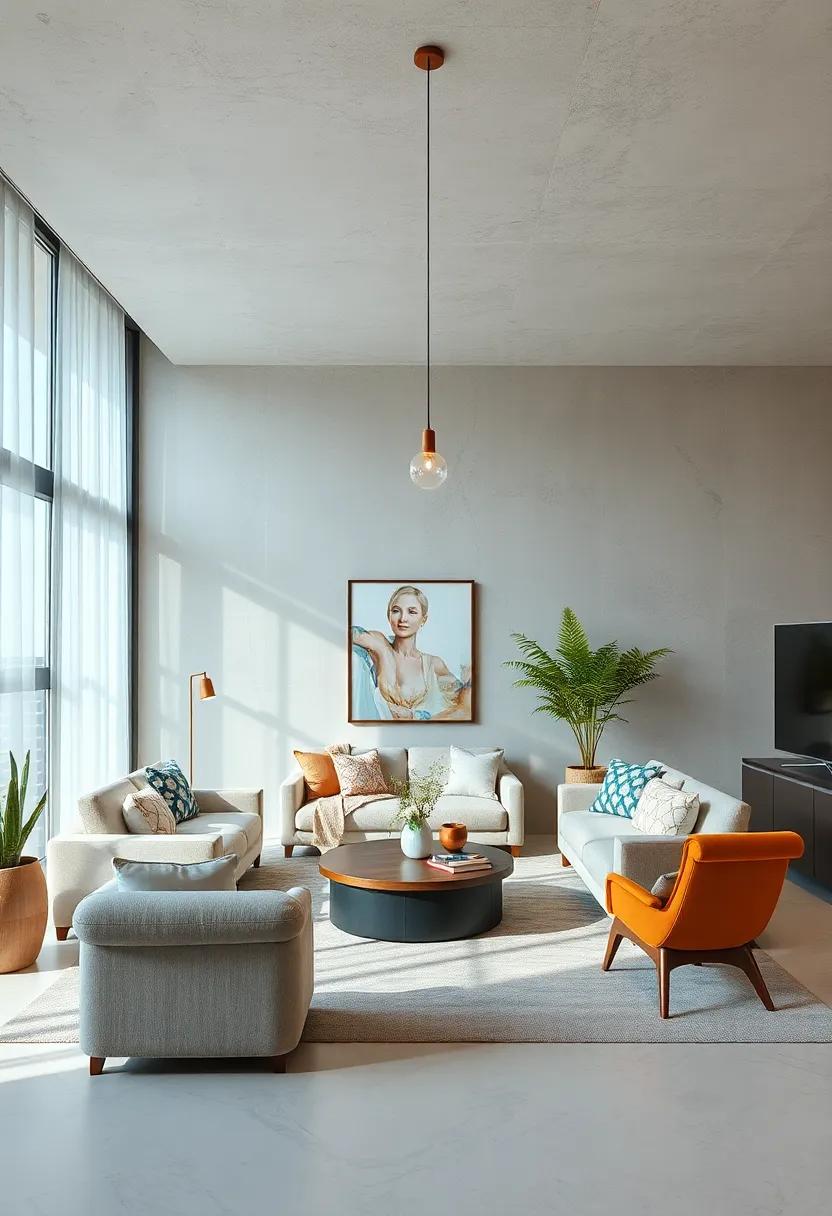
Creating a captivating space often hinges on the interplay of various materials. Consider combining the warmth of wood, the sleekness of metal, and the comfort of fabric. This blend not only enhances visual appeal but also tantalizes the senses. Lay a rich, wooden floor adorned with a plush area rug, or drape sumptuous velvet pillows over a sleek leather couch.The tactile experience invites guests to touch and explore, crafting a dialog between elements that ignites intrigue.
When selecting textures, think beyond the obvious pairings. For instance, juxtaposing rustic wood accents with shiny, industrial metals can create a striking contrast. Incorporate items like rough-hewn shelving, brushed metal fixtures, and soft cotton curtains to achieve a harmonious balance. Each texture should play a role—allowing the warmth of textiles to soften the rigidity of wood and metal. Mixing these elements fosters a cohesive story, inviting people to discover the nuances of the space.
Create Focal Points: Designate certain areas as focal points to draw the eye and anchor the room, whether through art or furniture
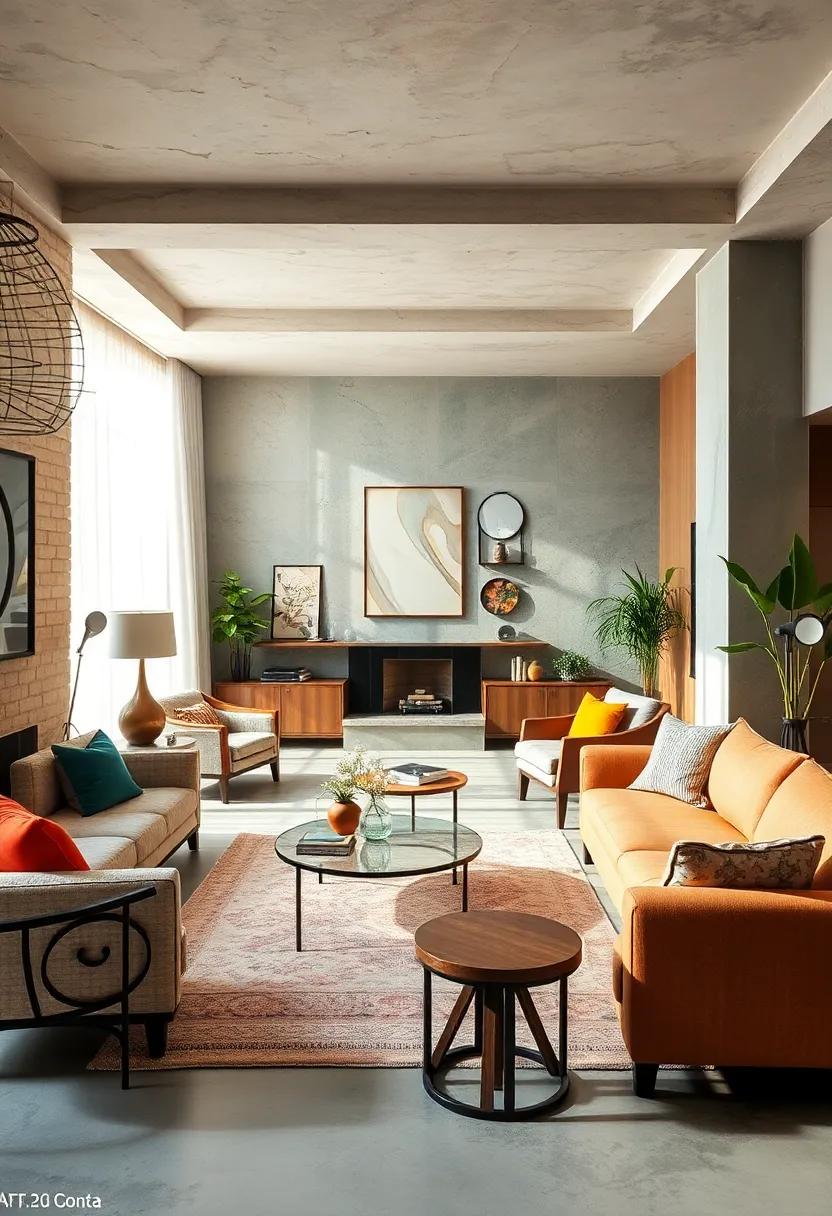
Create captivating focal points in your eclectic space by strategically placing striking art pieces or bold furniture. Consider exploring a variety of textures, colors, and materials that resonate with the theme of your room while ensuring they create visual interest. Such as, a large canvas with vibrant hues can breathe life into a neutral wall, while a beautifully upholstered armchair can serve as a welcoming centerpiece. By leveraging these attention-grabbing elements, you not only anchor the room but also guide the flow of energy throughout the space.
Choose your focal points carefully to complement the overall decor. Here are some effective ideas to create engaging focal points:
- Gallery Wall: Create a dynamic display of artworks in various frames that tells a story or showcases personal interests.
- statement furniture: Opt for an oversized coffee table or a uniquely shaped sofa to establish a dominant presence.
- Color Pop: Use a bold accent color for a wall or a piece of furniture that harmonizes with subtler shades in the room.
- Unique Lighting: Install a striking chandelier or table lamps that not only illuminate but also act as artistic fixtures.
Balance Patterns: Use a selection of patterns that complement each other; consider mixing stripes, florals, and geometrics for a lively yet cohesive look
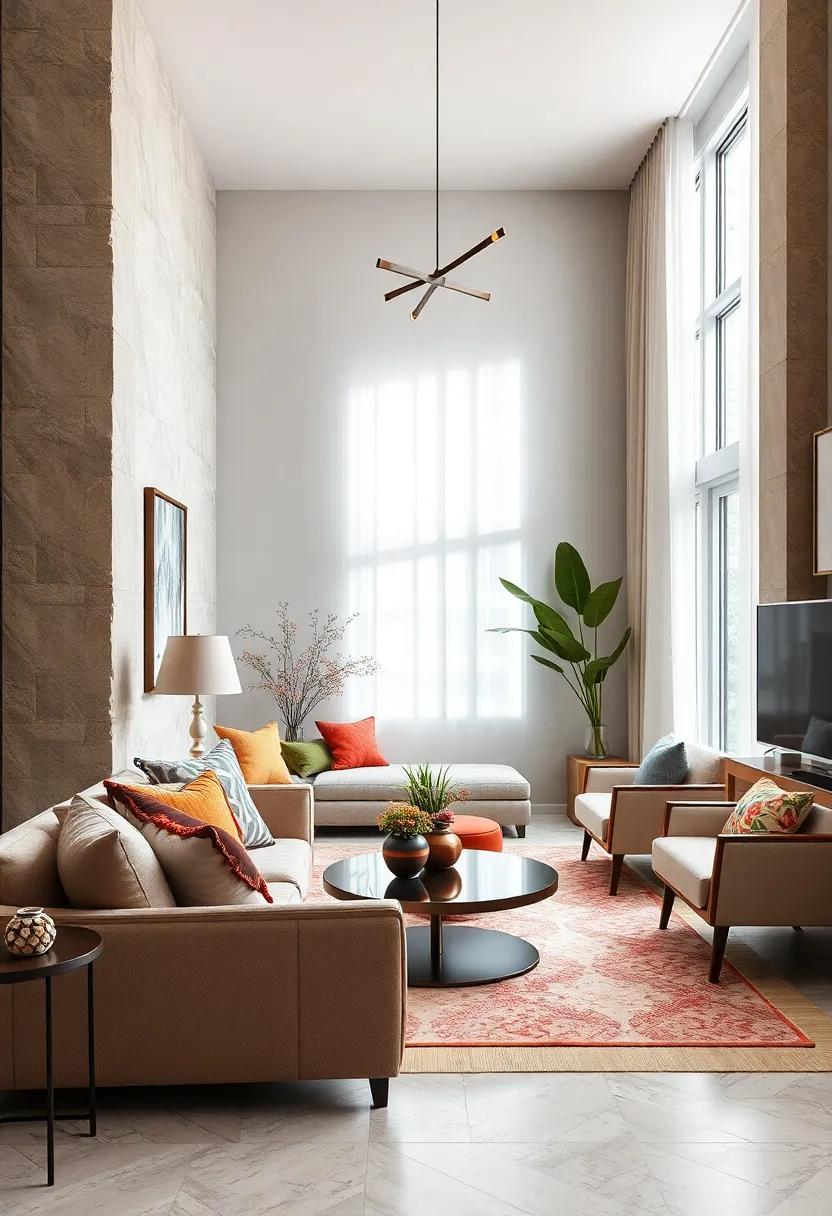
Creating a harmonious space doesn’t mean you have to shy away from diverse patterns. Rather, think about how you can combine different styles that complement one another. Consider mixing stripes—a timeless classic that adds structure—with the soft, organic feel of florals. Add a dash of geometric prints to inject a modern flair. The key is to ensure that the colors of these patterns align; choose a common palette, such as soft pastels or bold jewel tones, and let that guide your selection process. This strategy helps unify the patterns and prevents your design from feeling chaotic.
When layering patterns,play with scale to add visual interest. Large, dramatic florals can be paired with smaller, more delicate stripes, creating a sense of balance. Furthermore, consider incorporating a textures table to assess how various patterns will interact with each other. This can guide your decisions as you envision your space. Below is a simple depiction:
| Pattern Type | Scale | Color Palette |
|---|---|---|
| Stripes | Medium | Soft Pastels |
| Florals | Large | Bold Colors |
| Geometric | Small | Monochrome |
Take the prospect to observe how each pattern influences the perception of space, leaving room for playful experimentation while keeping coherence top-of-mind. Remember,the art of mixing these patterns lies in the shared conversation they create,helping to bring life and dynamism to your interior design without overwhelming it.
Vary Furniture Heights: Incorporate pieces of different heights to create a dynamic arrangement and maintain visual interest
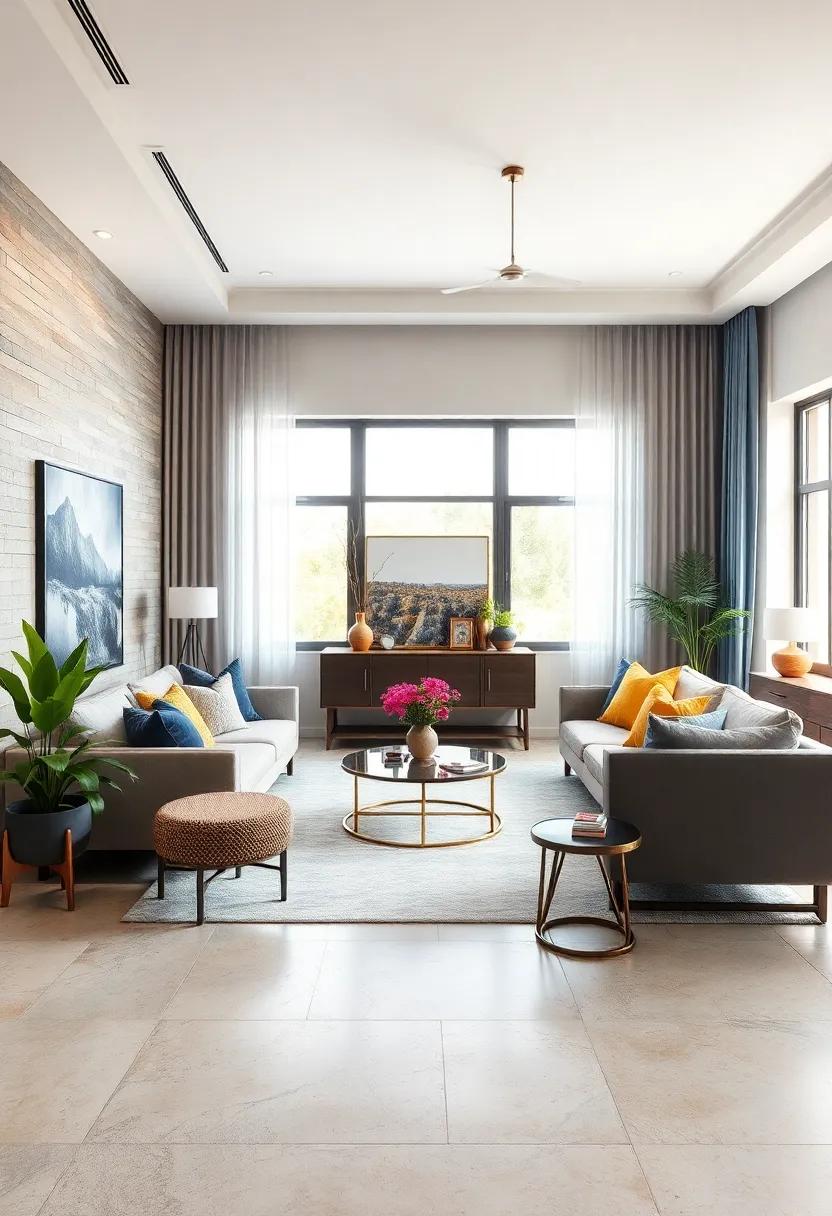
One of the most effective ways to achieve visual excitement in your space is by selecting furniture that varies in height. Mixing low-slung sofas with tall bookcases or pendant lights adds a playful rhythm to the room. By incorporating pieces such as coffee tables, side tables, or stools of different heights, you can create layers that encourage the eye to travel through the space. Consider utilizing floating shelves or floor lamps to draw attention upwards or downwards, adding dimension and depth while concurrently enhancing functionality.
To keep the arrangement cohesive, think about balancing shorter pieces with taller counterparts in a way that feels intentional. You might try grouping a chic accent chair with a slender console table or pair a prominent armchair with a delicate side table beside it. This contrasts the visual weight and enhances the quirky nature of eclectic design. Here are some considerations for height variation:
| Furniture Type | Recommended Height | Notes |
|---|---|---|
| Accent Chair | 30-36 inches | Ideal for pairing with lower tables |
| Coffee Table | 16-18 inches | Should complement seating height |
| Bookcase | 72 inches+ | Creates vertical interest in the room |
| Lamps | 58-64 inches | Enhances layered lighting |
Layer Lighting: Use multiple sources of light, such as lamps, sconces, and overhead fixtures, to enhance the ambiance and function of each space
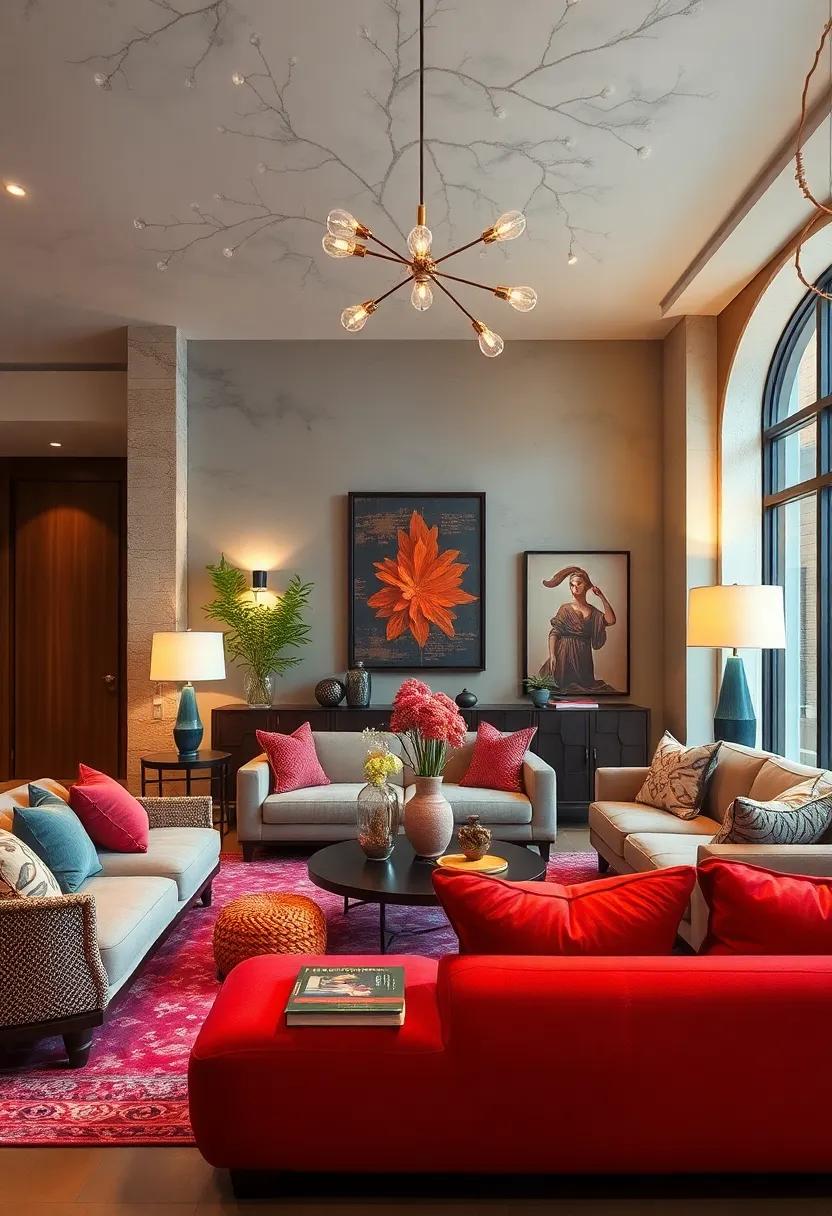
One of the most effective ways to create a captivating atmosphere in your eclectic space is by embracing the concept of layering light.By incorporating multiple sources of illumination, you can transform each room from mundane to magical. Consider mixing overhead fixtures like chandeliers and pendant lights with accent lighting from sconces and table lamps. This approach not only highlights unique features within the space but also allows for versatility in adjusting the ambiance based on the time of day or occasion.Use warm white bulbs to create a cozy feel or opt for brighter lights in workspaces to enhance productivity.
To effectively layer your lighting, try these methods:
- Utilize Different Heights: Hang fixtures at various levels to add depth and interest.
- Highlight Artwork: Use directed lighting to showcase paintings or sculptures.
- Dimmer Switches: Install dimmers to adjust light intensity and set the mood effortlessly.
Consider creating a balance between functional and decorative lighting, ensuring that each piece complements the overall design. A table below highlights how to effectively combine different lighting types while maintaining harmony in your decor:
| Lighting Type | Purpose | Best Locations |
|---|---|---|
| Overhead Fixtures | General illumination | Dining room, kitchen, living room |
| Table Lamps | Task and accent lighting | Side tables, desks, nightstands |
| Wall Sconces | Ambient and accent lighting | Hallways, living areas, bedrooms |
Find Common Themes: Identify elements that connect your items, like a recurring shape or a similar material, to unify disparate pieces
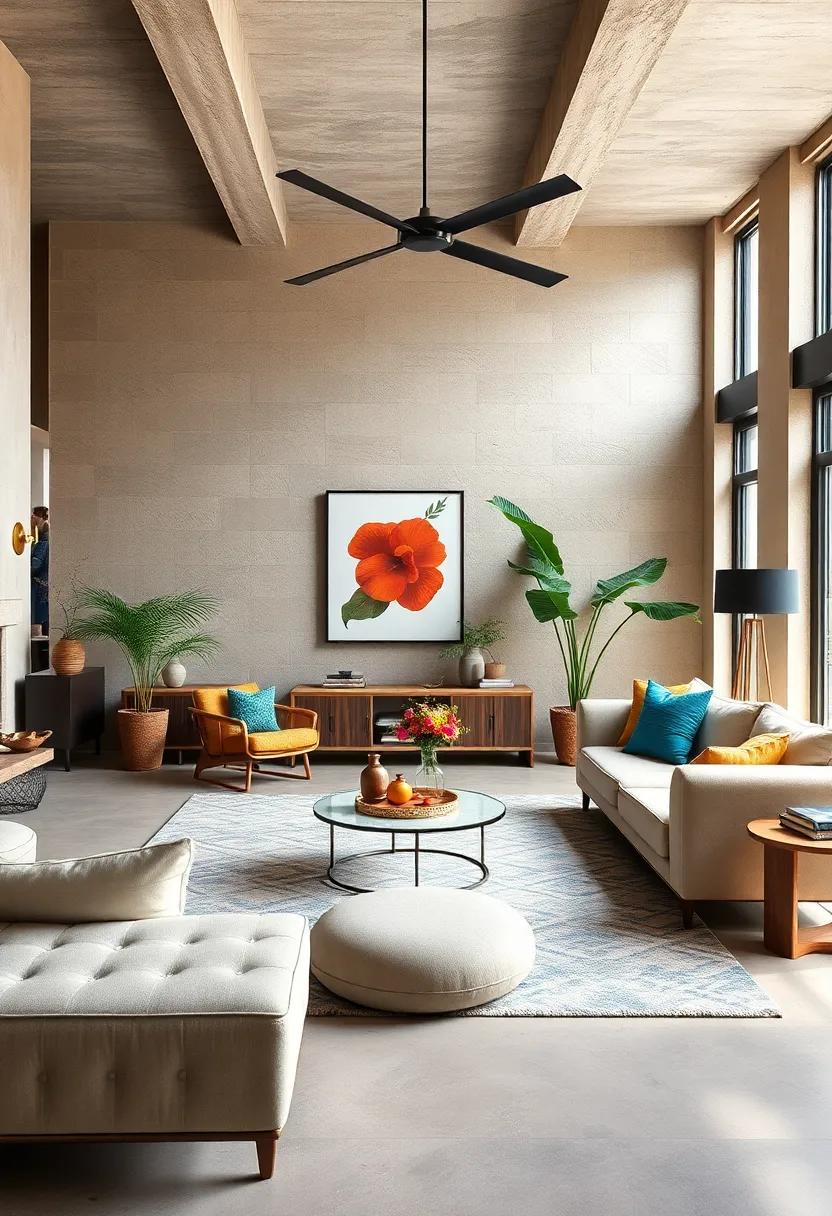
When curating an eclectic interior, discovering connections between seemingly unrelated pieces can transform your space into a cohesive environment. Start by examining the shapes that repeat across your items; whether it’s a series of rounded forms in furniture or angular accents in art, these similarities can guide your overall aesthetic. Additionally, consider the material choices in your decor, as unifying textures can create a pleasing visual rhythm.Look for opportunities to tie elements together through:
- Color Palette: Select a few shared colors from each item to create a harmonious tie.
- Materiality: Use similar materials, like wood or metal, across different pieces to establish continuity.
- Design Style: Even if the styles vary, find foundational design elements—like clean lines or intricate details—that resonate.
Creating a visual narrative through common themes can be as simple as layering patterns that echo one another or curating artworks that reflect an overarching story. Consider a short table to map out your findings, helping visualize your connections:
| Item | Common Theme | Shape/Material |
|---|---|---|
| Vintage Sofa | Curved Lines | Fabric Upholstery |
| Geometric Wall Art | Angular Accents | Metal Frame |
| Wooden Coffee Table | Natural Textures | Wood |
This allows you to not only see the connections but also feel the flow of your space as a thoughtfully curated collection, ensuring no piece feels out of place while still celebrating the beauty of diversity.
Use Area Rugs: Anchor furniture groupings with area rugs to define spaces and add warmth, while also unifying varied styles
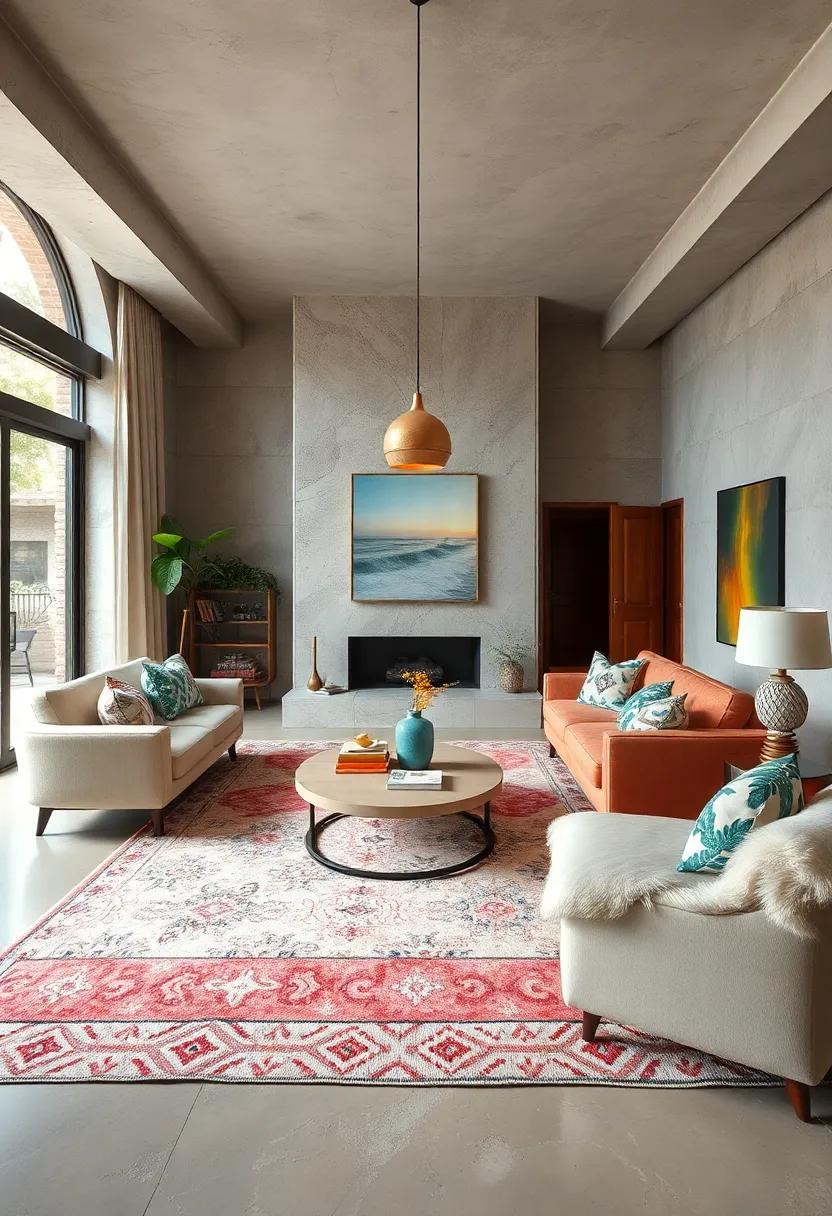
Area rugs can work wonders in creating distinct zones within an open-concept space,allowing for a fluid transition between different styles and functions. By choosing a rug that complements both the colors and textures of your furnishings, you can harmonize collective aesthetics while providing a physical boundary that anchors your furniture groupings. Consider the scale, pattern, and color palette of your rugs to effectively tie together disparate styles, ensuring they don’t compete with each other but rather enhance the visual narrative of the room.
When selecting an area rug, here are several factors to keep in mind to achieve a balanced look:
- Size Matters: Ensure your area rug is proportionate to your furniture arrangement; ideally, all front legs of furniture should sit on the rug.
- Color Coordination: Utilize colors found in other elements of the space to draw everything together.
- Texture Play: Mix different textures to invite warmth and invite tactile interest—soft underfoot against sleek furniture, such as.
- Pattern Balance: If your decor is already rich with patterns, opt for a solid rug to ground the space, or vice versa.
Incorporate Plants: Add greenery to infuse life and energy into your decor, providing a natural element that ties different styles together
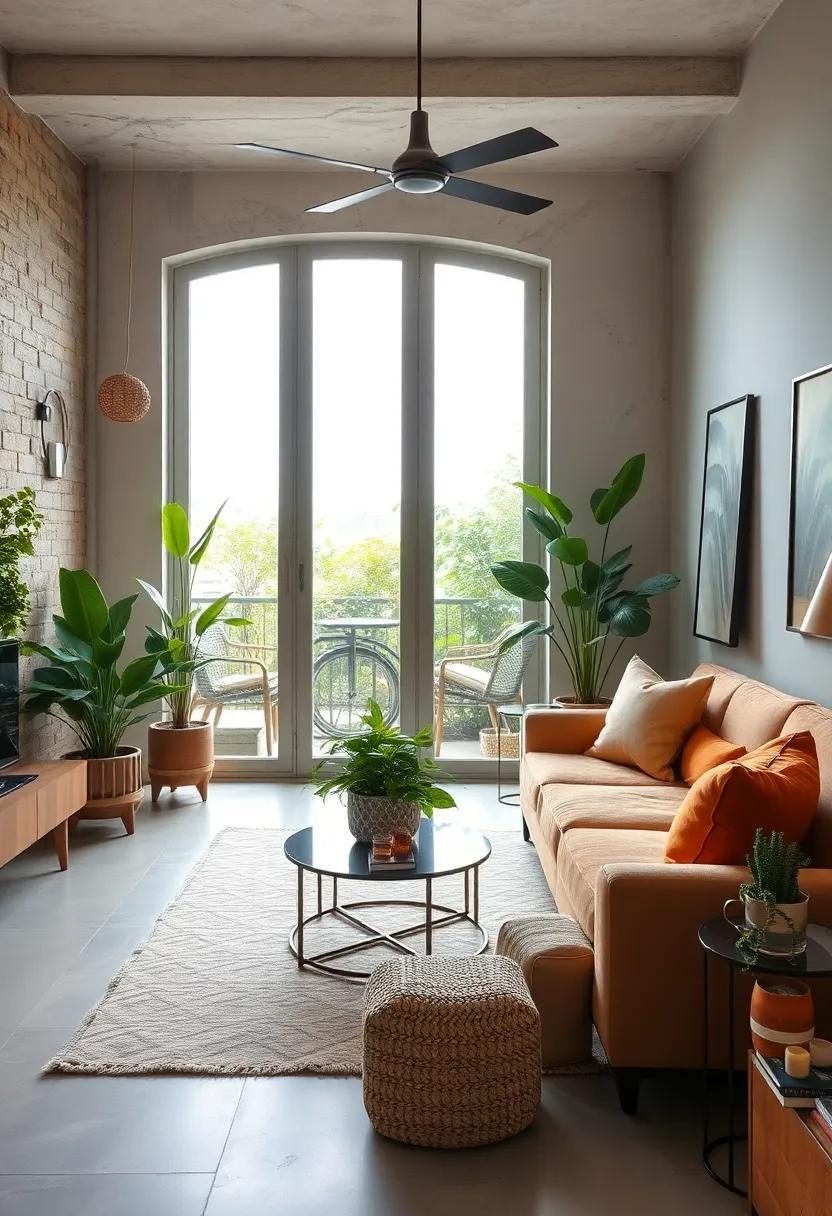
Transforming your space with the vibrant touch of greenery can effortlessly unify the eclectic elements in your decor. By strategically incorporating plants, you can create a soothing yet lively atmosphere that breathes life into any room. Consider the following ways to integrate foliage into your design:
- Statement Plants: Use large, bold plants like a fiddle leaf fig or monstera as focal points that draw the eye and anchor different design styles.
- Hanging Planters: Suspend trailing plants like pothos or string of pearls to add vertical interest and maximize floor space.
- Grouping: Arrange various plants of differing heights and textures together to form an inviting display that enhances variety without overwhelming the senses.
- Color Coordination: choose planters that reflect your color scheme—think terracotta for rustic vibes or sleek ceramic for a modern touch—to harmonize with other decor elements.
Moreover, plants can serve practical and aesthetic purposes, improving air quality and creating a sense of calm. To help you decide which plants to incorporate based on your lifestyle and decor themes, refer to the table below:
| Plant Type | Style Match | Care Level |
|---|---|---|
| Snake Plant | Modern | Low |
| Fern | Bohemian | medium |
| Succulent | Minimalist | Low |
| Peace Lily | Classic | Medium |
mix Old and New: Blend vintage and contemporary pieces for a timeless aesthetic that tells a story without feeling disjointed
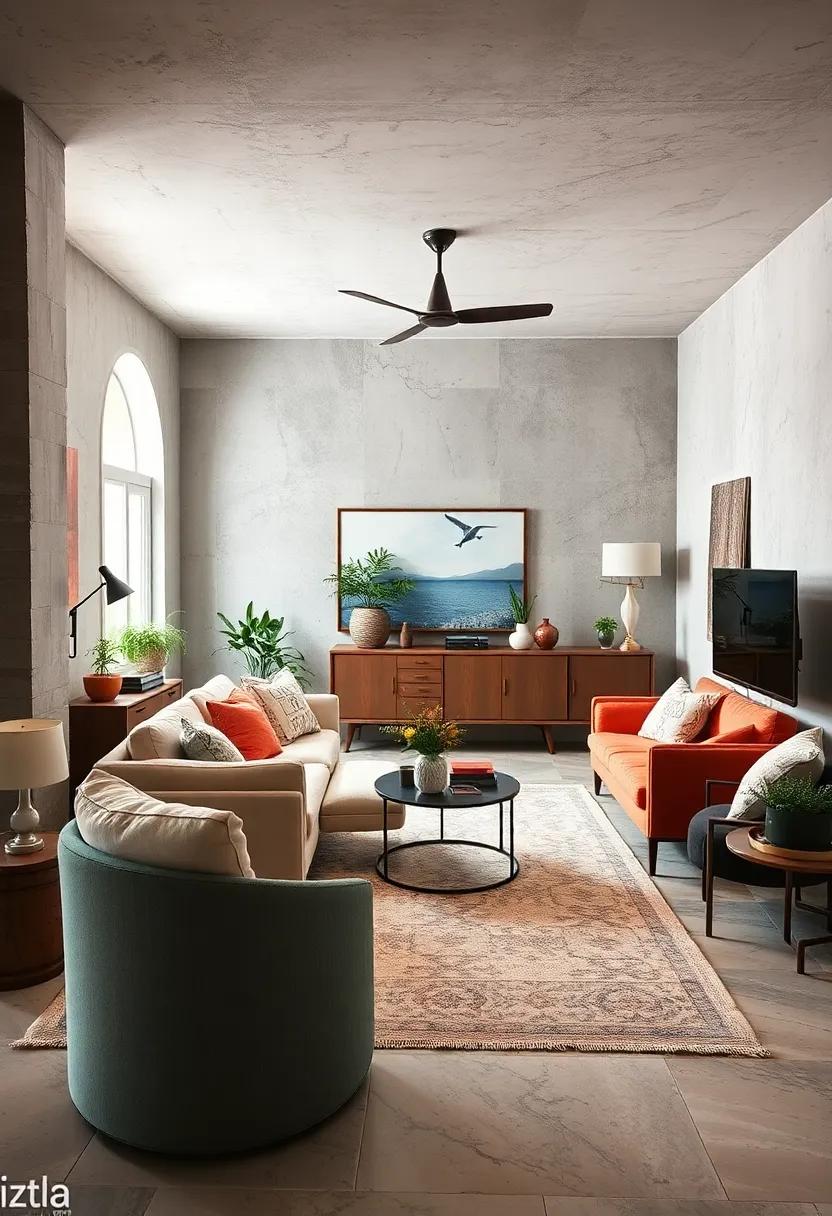
Creating a harmonious space that merges the charm of vintage with the sleekness of contemporary design allows for a deeper narrative within your home. Consider incorporating key vintage pieces that serve as focal points, such as an ornate mirror or an antique coffee table. Pair these with modern furnishings,like a minimalist sofa or geometric lighting fixtures,to bridge the gap between eras. Use a cohesive color palette to ensure that both styles complement rather than clash; think muted pastels or deep jewel tones that can embody both vintage warmth and modern freshness.
Textures play a crucial role in this balancing act. Mix soft textiles—like a vintage floral-patterned throw pillow—with sleek, modern fabrics such as leather or faux fur. To enhance the storytelling aspect, display curated collections that showcase both styles; as a notable example, a gallery wall could feature a contemporary graphic alongside a vintage painting, anchored by a common color scheme.Create a thoughtful layout where modern pieces draw the eye naturally toward vintage finds,ensuring each corner of the room feels intentional and aligned with your overall vision.
choose a Consistent Style: Even within eclectic designs, aligning with a consistent overarching style (like Bohemian or Mid-century Modern) can establish harmony
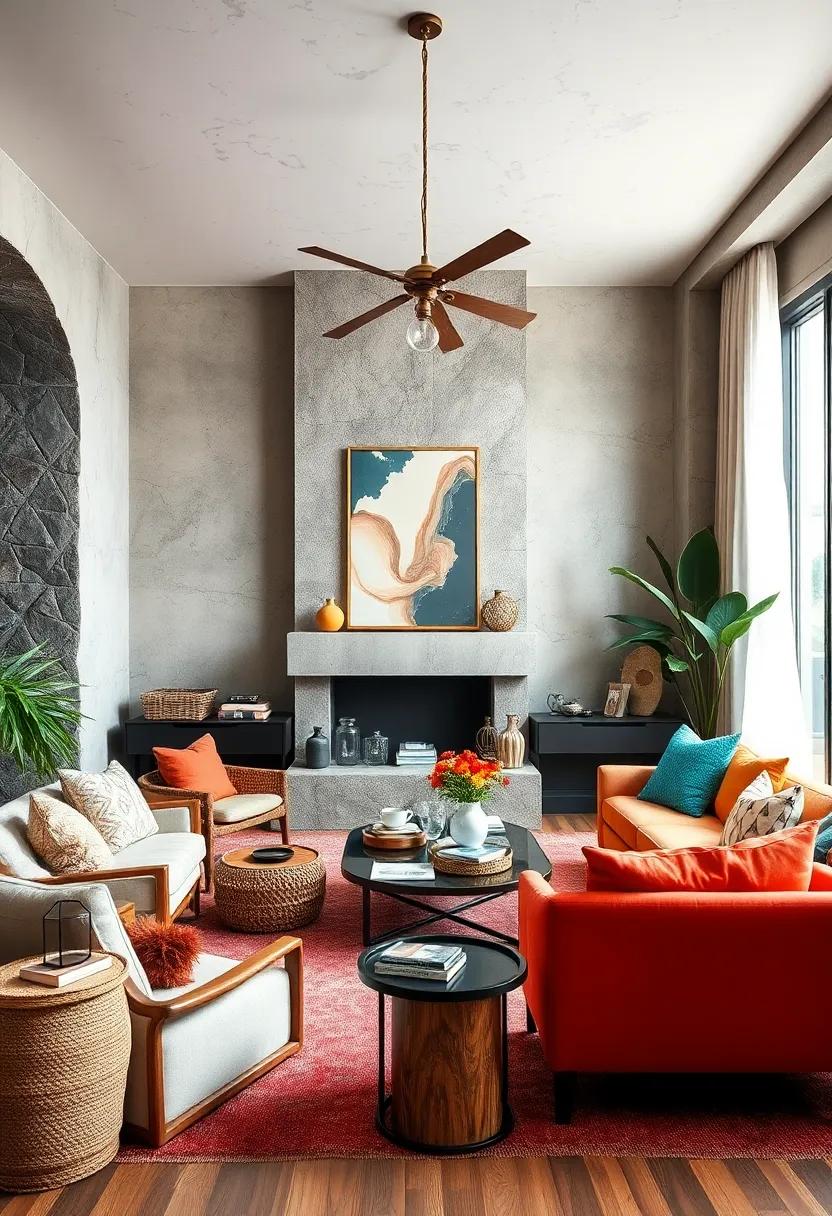
Eclectic designs thrive on the beauty of variety, but without a consistent style guiding the selection process, the end result can feel chaotic. To create a harmonious atmosphere, consider adopting an overarching design style that resonates with your personal taste. Whether you lean towards the relaxed vibes of Bohemian or the sleek lines of Mid-century Modern, establishing this foundation makes it easier to mix and match elements effectively. As you curate your space, aim to emphasize key features that reflect your chosen style, allowing them to shine amidst the diversity of other pieces.
Incorporate color palettes, textures, and shapes that echo your selected style throughout the room. By doing this, each individual piece will contribute to a cohesive narrative rather than compete for attention. Consider the following elements to maintain consistency:
- Color Palette: Choose a set of colors that align with your style, using them as a thread throughout various decor items.
- Materials: stick to specific materials (like wood, metal, or textiles) that match your overarching theme to provide physical cohesion.
- Patterns: Select patterns that resonate with your chosen style,balancing busy designs with more muted options to create unity.
Please see the table below for a quick reference on aligning different pieces with your chosen style:
| Style | Key Characteristics | Suggested Items |
|---|---|---|
| Bohemian | Eclectic, layered, textured | Rugs, throws, plants |
| Mid-century Modern | Sleek, functional, organic shapes | Furniture, artwork, lighting |
| Industrial | Raw, rustic, utilitarian | Metal furniture, exposed brick |
Curate Art Wisely: Display art that resonates with your theme, varying frame styles and sizes while ensuring the gallery looks thoughtfully arranged
When curating your art collection, it’s essential to select pieces that not only reflect your personal style but also enhance the overarching theme of your space. Consider exploring a wide range of styles and mediums that resonate with your aesthetic, showcasing everything from vibrant modern abstract pieces to serene landscapes. By incorporating various frame styles—ranging from ornate vintage frames to sleek contemporary ones—you create visual interest that invites viewers to experience the diversity of your collection. Pay attention to the sizes of the artworks, mixing larger statement pieces with smaller works to create a dynamic flow that keeps the eye moving across the display.
To achieve a thoughtfully arranged gallery, think about the layout before hammering in any nails. consider using templates or painter’s tape to outline where each piece will go, ensuring balance across the arrangement. A well-planned gallery wall can tell a story; use spacing strategically to unify or contrast different artworks. moreover, keeping your art collection cohesive doesn’t mean sticking to one style. Rather, allow for eclecticism by grouping works that share similar colors or themes while still maintaining a balanced overall look. This approach not only elevates the aesthetic of your interior but also provides a harmonious backdrop for your curated pieces.
Create Zones: Designate areas for different functions, utilizing furniture placement to delineate spaces while still promoting flow
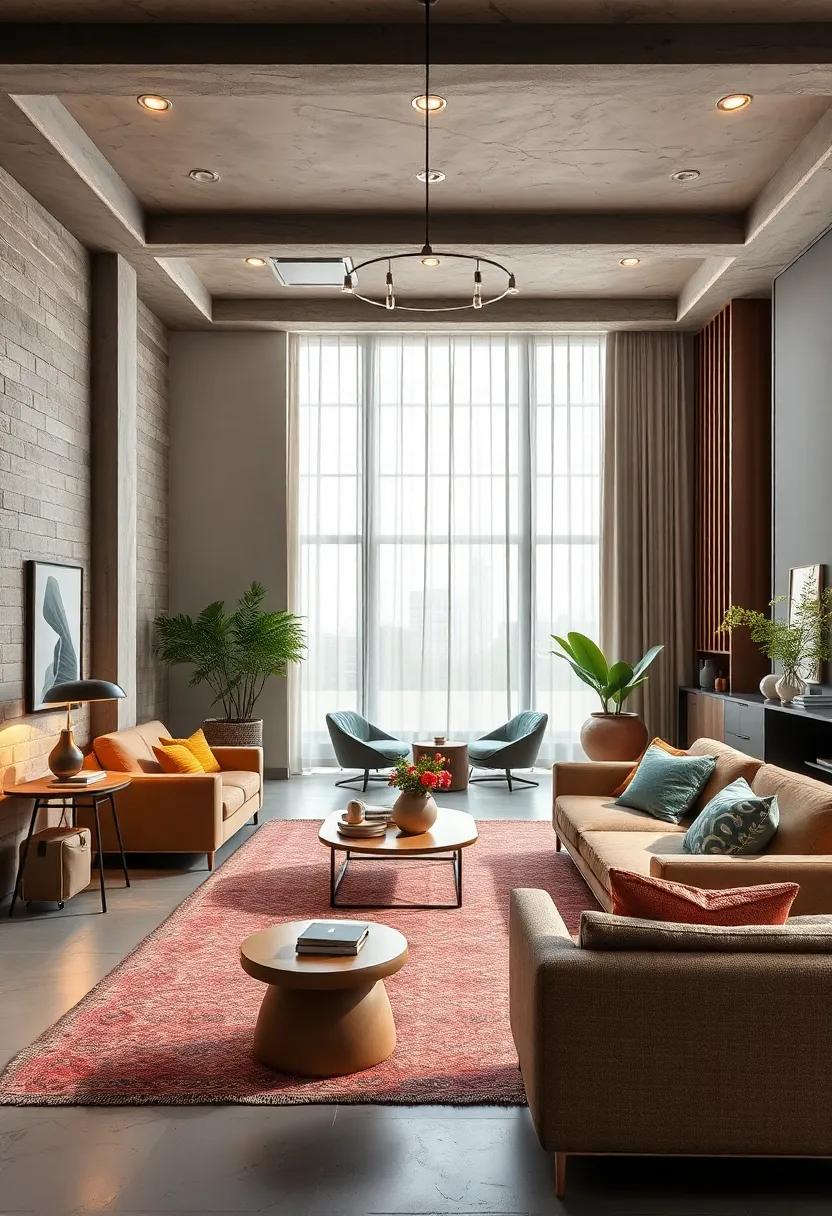
When styling a space with eclectic flair, the strategic placement of furniture can serve as an effective way to carve out distinct areas that cater to various activities. Consider your living room, for example, where a cozy reading nook might benefit from a plush armchair tucked into a corner, softly illuminated by an elegant floor lamp. Simultaneously occurring, a shared family area can be defined by a large sectional sofa anchored by a visually appealing coffee table.By utilizing rugs to visually demarcate these zones, you create a seamless transition between areas while maintaining unity and flow throughout the room.
Another critically important aspect to ensure functionality and aesthetics is to incorporate varying heights and styles of furniture to enhance visual interest without overwhelming the space.For instance, a modern glass coffee table juxtaposed with a chunky, vintage wooden side table can effectively draw the eye and encourage exploration. Integrating elements such as shelving units or room dividers can further assist in separating zones while also offering additional storage or display options. By embracing contrast and layering, you can not only define distinct areas but also enhance the overall cohesiveness of your eclectic design.
Personalize with Accessories: Showcase your personality through curated accessories, but keep them balanced to avoid clutter

Accessories are the perfect way to reflect your individuality within an eclectic space. Consider curating a collection that tells a story about who you are, using items that resonate with your experiences or passions. Bold sculptures, vintage finds, or artistic wall art can add depth and personality to your interior.However, it’s essential to keep these accessories well-organized to maintain a sense of harmony. Think about grouping similar items together; a small collection of travel souvenirs or a series of framed photographs can create a focal point without overwhelming the eye.
When selecting accessories, aim for a blend of textures and materials to create visual interest while avoiding clutter. Natural elements like greenery or wooden decor can balance out more modern items, establishing a cohesive flow throughout the room. Additionally, consider the scale of your accessories—small trinkets can easily be lost in a large room, while oversized pieces might dominate the space.using a minimalist approach to organize accessories can also enhance the artistic vibe, with shelves designed for display or even dedicated corners that allow each piece to shine. Strike a balance that allows your personality to shine through without straying into chaos.
Utilize Negative Space: Leave areas intentionally empty to allow the eye to rest, preventing overwhelming visual chaos
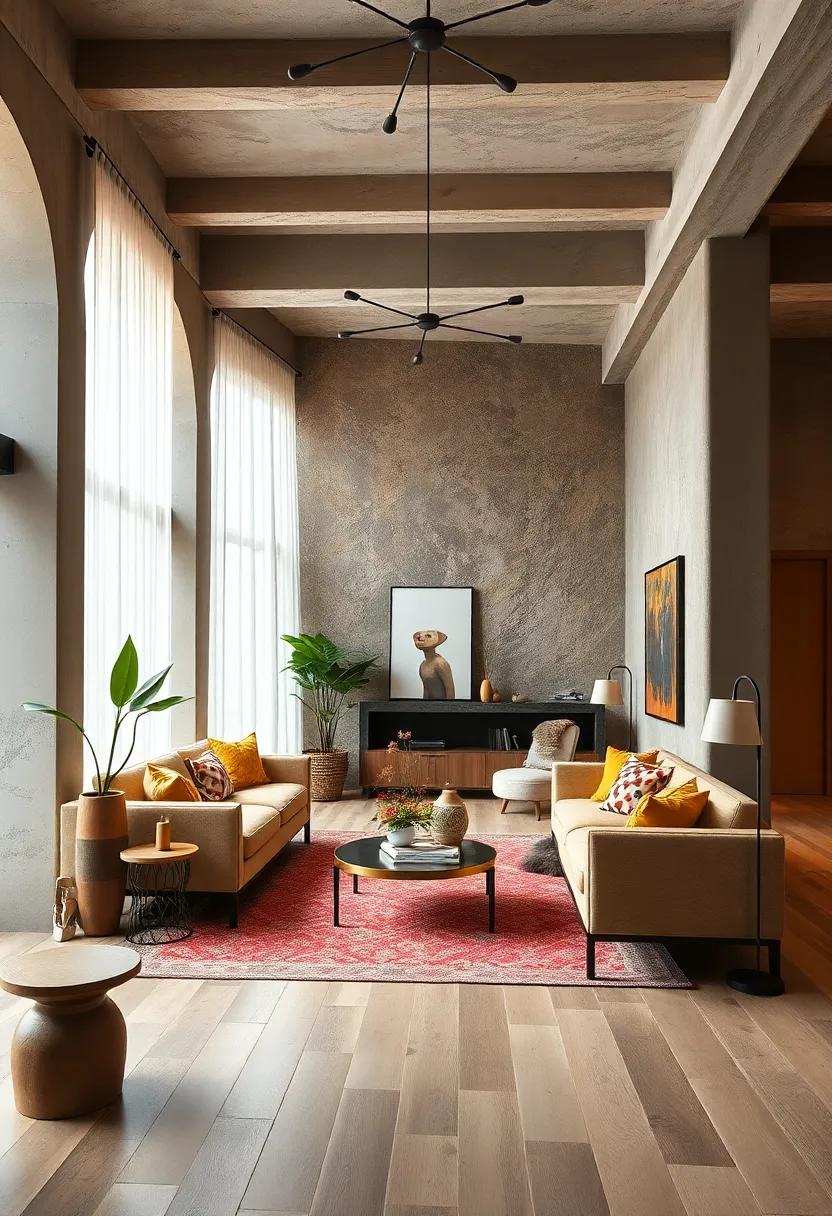
Embracing the art of intentional emptiness can elevate the design aesthetic of any eclectic space. By strategically leaving certain areas devoid of decor or furniture, you create a serene pause in the visual symphony of your interior.Think of these empty zones as a canvas—a space for the eye to rest and the mind to breathe. A well-placed armchair, as a notable example, surrounded by a void can accentuate the charm of its design without competing with surrounding elements. This interplay of filled and empty allows for more dynamic interactions between objects, fostering a sense of balance.
To effectively implement this principle,consider the following strategies:
- Furniture Placement: Aim for spacious pathways around larger pieces to prevent cluttered visuals.
- Wall Art: Use large frames with ample background to enhance the impact of each piece.
- Color Palette: Employ lighter shades in certain areas to create a tranquil effect, contrasting with bolder colors nearby.
Utilizing negative space not only creates a more aesthetically pleasing look but also serves a practical purpose. When integrated thoughtfully, open areas can enhance the perceived size of a room, making it feel more inviting. Consider the following layout examples that highlight this principle:
| Room Type | Negative Space Implementation |
|---|---|
| Living Room | Leave a notable area open between seating and coffee tables. |
| Bedroom | Opt for a bed frame with a minimalist headboard to draw focus. |
| Dining Area | Incorporate wide spaces between the table and sideboards or buffet. |
Harmonize with Shapes: Choose decor pieces that incorporate similar shapes, like rounded or angular, to create consistency within variety

in an eclectic space, harmonizing shapes can bring cohesion to a display that might otherwise feel chaotic. When selecting decor pieces, consider grouping items that share characteristics in their silhouettes. rounded shapes, such as soft cushions, circular mirrors, and curved vases, can promote a sense of calm and flow. On the other hand, angular forms—think geometric bookshelves, sharp-edged coffee tables, and triangular wall art—inject a bit of energy and a modern edge. Mixing these two categories requires a careful balance, so that while each piece stands out, they still share a conversation and connection through their shapes.
To streamline your design process,create a visual guide with examples of both rounded and angular pieces that embody your style. For instance, you can compile a table highlighting a few key items that can act as cornerstones for your decor:
| Shape | Decor Item | Suggested Material |
|---|---|---|
| Rounded | Poufs | Fabric or Leather |
| Rounded | Wall Mirrors | Glass with Metal Frame |
| Angular | Side Tables | Wood or Metal |
| Angular | Artwork | Canvas or Frame |
By being intentional about the shapes you choose and thoughtfully arranging them, you can foster an environment where diverse styles coexist in a visually harmonious way. This approach adds depth and interest, without losing a sense of unity within your eclectic design.
Introduce a Signature Element: Consider a defining piece, such as a unique sculpture or a striking color, that acts as a common thread throughout your design
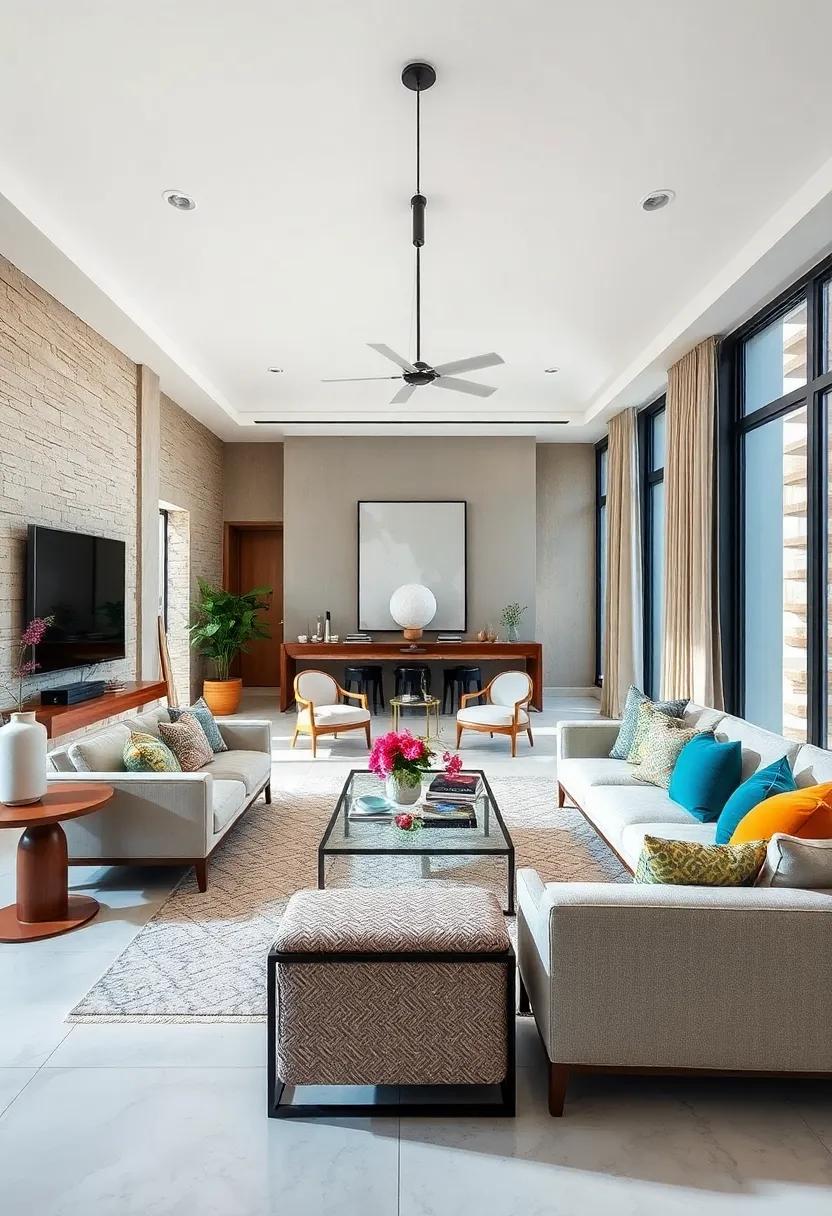
In the world of eclectic interior design, a signature element serves as an anchor that ties diverse styles together, breathing life into your space. By incorporating a distinctive piece, you can create a harmonious focal point that draws the eye and establishes a cohesive narrative throughout your design. Consider elements such as:
- A bold sculpture: A unique piece of art can inject personality and provoke conversation, seamlessly blending with various styles.
- A striking color: Choosing a particular hue as a recurring theme—whether it be a vibrant teal or a soothing earthy tone—creates a consistent thread across seemingly disparate elements.
- Textured textiles: Incorporate a signature fabric, like a luxurious velvet or an artisanal embroidery, that can be used for pillows, throws, or even upholstery, adding warmth and depth.
- Statement lighting: A standout chandelier or sculptural lamp can unify rooms and enhance the overall ambiance, balancing eclectic mixtures with a elegant touch.
creating a signature element not only sets the tone but also ensures that your design remains intentional rather than chaotic. To make the most of this concept, consider the following:
| Signature Element | Impact |
|---|---|
| Unique Sculpture | Serves as a captivating centerpiece that ignites creativity. |
| defined Color Palette | Creates visual harmony and establishes a mood. |
| Textured Fabrics | Introduces warmth and tactile intrigue. |
| Artistic Lighting | Fuses functionality with aesthetic elegance. |
Experiment with Scale: Play with oversized and miniature items to create charming focal points that emphasize the eclectic nature of your space
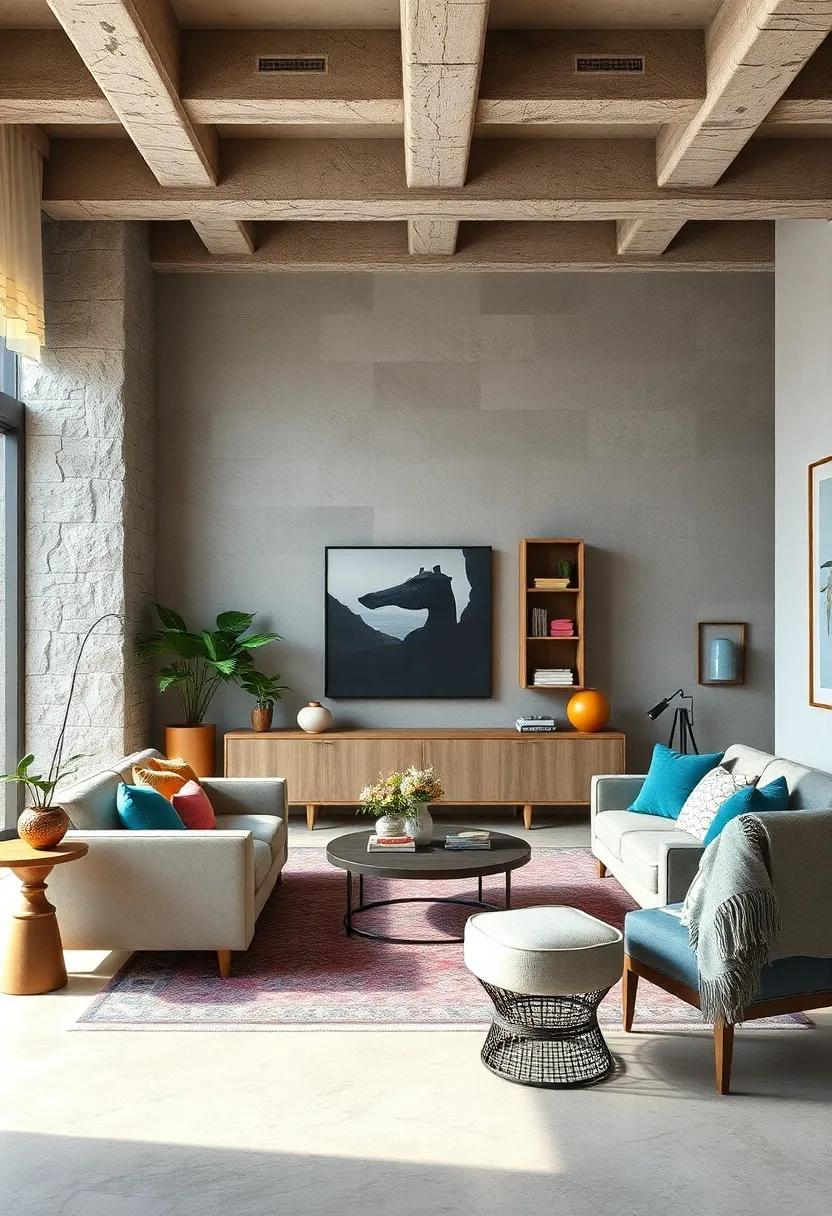
One of the most delightful ways to inject personality into your living space is by incorporating items of varying scales.Oversized pieces can serve as captivating statement items that draw the eye and anchor the room, while miniature decor adds a touch of whimsy and intrigue. Consider using a large sculpture or a bold artwork as a focal point against a backdrop of smaller, intricately designed knickknacks. This juxtaposition not only creates visual interest but also invites curiosity—guests will be drawn to explore the unique interplay of size. To enhance this effect, think about arranging oversized furniture, like a grand armchair, alongside a collection of small potted plants or delicate vintage figurines.
When played with thoughtfully,scale can break the monotony of traditional arrangements. Create a shelf display that features a mix of vintage globes and tiny books or a gallery wall that highlights a massive abstract painting next to a series of small framed photographs. Such contrasts allow each item to shine in its own right. To further emphasize the eclectic nature of your decor, consider grouping together items of similar textures or colors despite their size differences. Below is a table showing examples of items you can combine for maximum impact:
| Oversized items | Miniature Items |
|---|---|
| Large floor lamp | Miniature succulents |
| Statement wall art | Tiny ceramic figurines |
| Oversized clock | Small vintage books |
| Big comfy sofa | Petite decorative trays |
Seasonal Swaps: Embrace seasonal decor changes, allowing for eclectic variation without committing to more significant design shifts
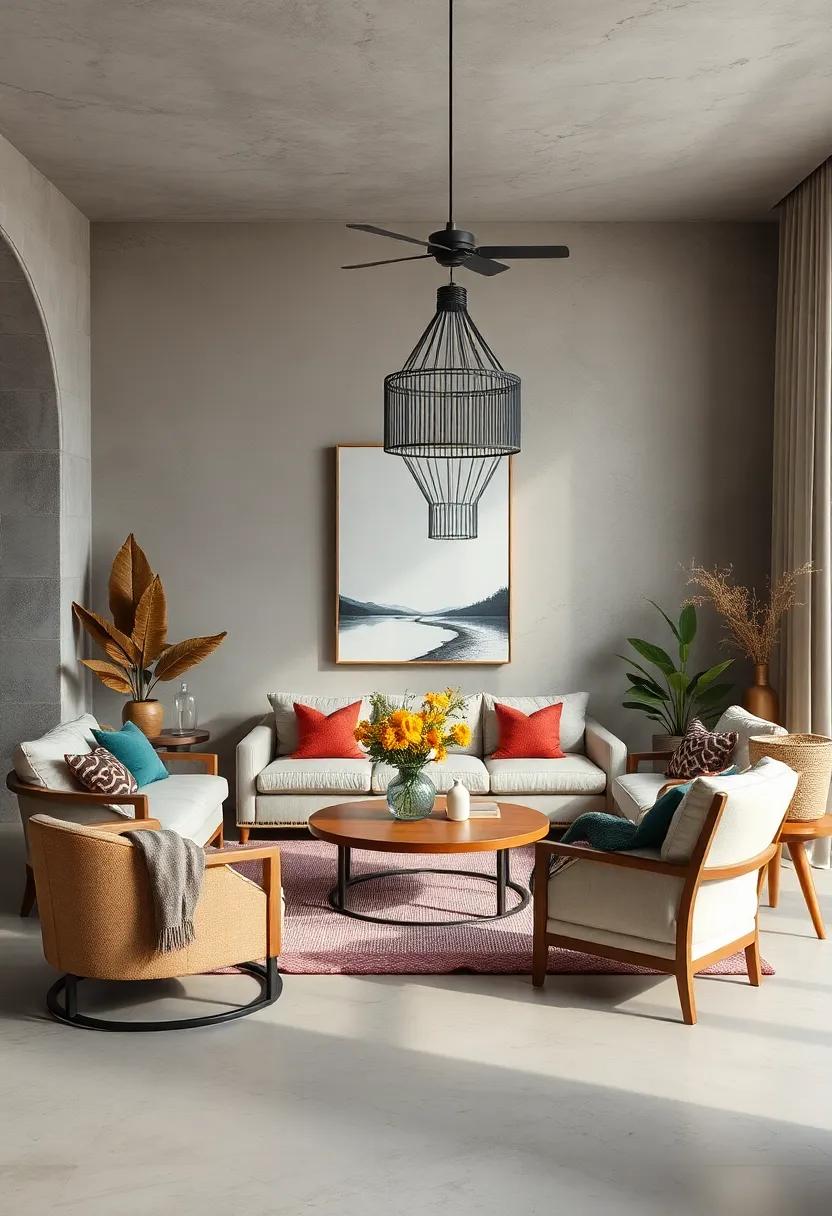
Transforming your space to reflect the seasons is a delightful way to celebrate nature’s rhythm and inject life into your eclectic interior.Embrace the vibrant colors of autumn with rich oranges and deep browns, or prepare for winter by layering in serene whites and icy blues. seasonal swaps allow you to curate a constantly evolving environment, celebrating different motifs without the need for a drastic overhaul.Consider these decorative elements for your seasonal touch:
- Textiles: Switch out cushion covers, throws, and table linens to reflect seasonal shades and textures.
- Floral Arrangements: Use fresh or dried flowers to reflect the season; think sunflowers in summer and pine sprigs in winter.
- Artwork: Rotate pieces that evoke the essence of the seasons—shining beach scenes in summer and cozy indoor landscapes in winter.
Consider creating a seasonal box to store your decor items easily. This keeps your space tidy and provides a straightforward way to refresh your aesthetics throughout the year. You can categorize items into color themes, textures, and themes, making it simple to style your environment according to what nature has to offer. A quick reference table can be helpful:
| Season | Color Palette | Key Elements |
|---|---|---|
| Spring | Pastels, Bright greens | Floral Prints, Light Fabrics |
| Summer | Vibrant Blues, Sandy Beige | Beach Decor, airy Textiles |
| Autumn | Warm Reds, Golden Yellows | Leaves, Cozy Throws |
| Winter | Cool whites, Deep Blues | Evergreens, Warm Lighting |
Layer Personal Narratives: Incorporate items that tell your personal story, blending memorabilia with design for a space that feels uniquely yours
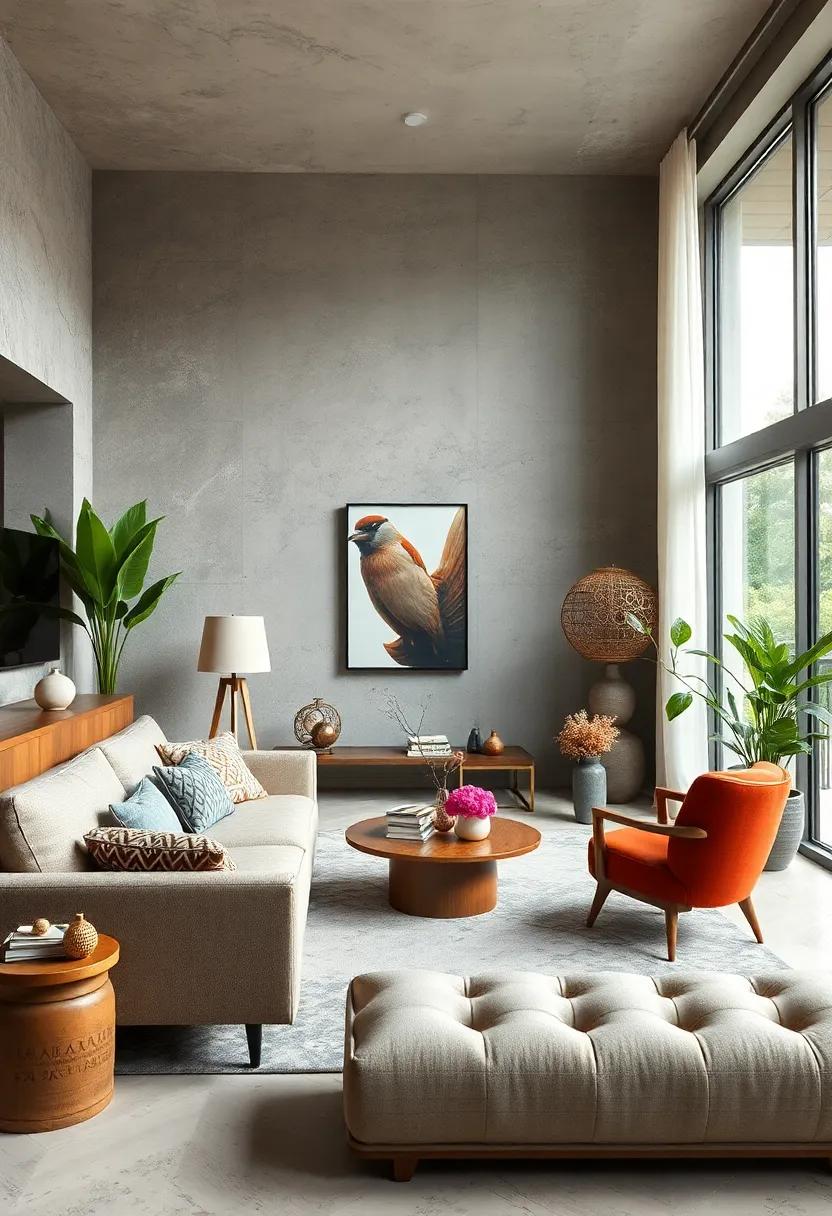
Transform your space into a storytelling gallery by thoughtfully integrating personal memorabilia. Consider displaying items that hold special meaning, such as travel souvenirs, family heirlooms, or photographs from cherished moments. Create a visual narrative that reflects your journey by:
- Grouping collections: Curate items that share a common theme—like vintage postcards or globes—on a dedicated shelf or wall, creating a cohesive display.
- Framing memories: Use a mix of frame styles to showcase photos that capture important milestones or beloved faces. This combination adds visual interest and invites conversation.
- Mixing textures: Pair soft fabrics, like a cherished quilt, with hard items, such as stone sculptures, to evoke a sense of warmth and depth in the layout.
Incorporating design elements that echo your personal history will develop layers of character. Use an interactive approach that allows guests to engage with your story by:
- Creating a vignette: assemble various items into one arrangement, blending your collectibles with complementary decor to tell a cohesive story.
- Experimenting with placement: Position items at different heights and angles to guide the eye and create visual intrigue in the room.
- Utilizing color palettes: Choose colors inspired by your life experiences, ensuring hues of special places or significant events are represented in your decor.
Avoid Overcrowding: Ensure each item has a purpose and space to breathe by avoiding overcrowding, allowing each piece to shine
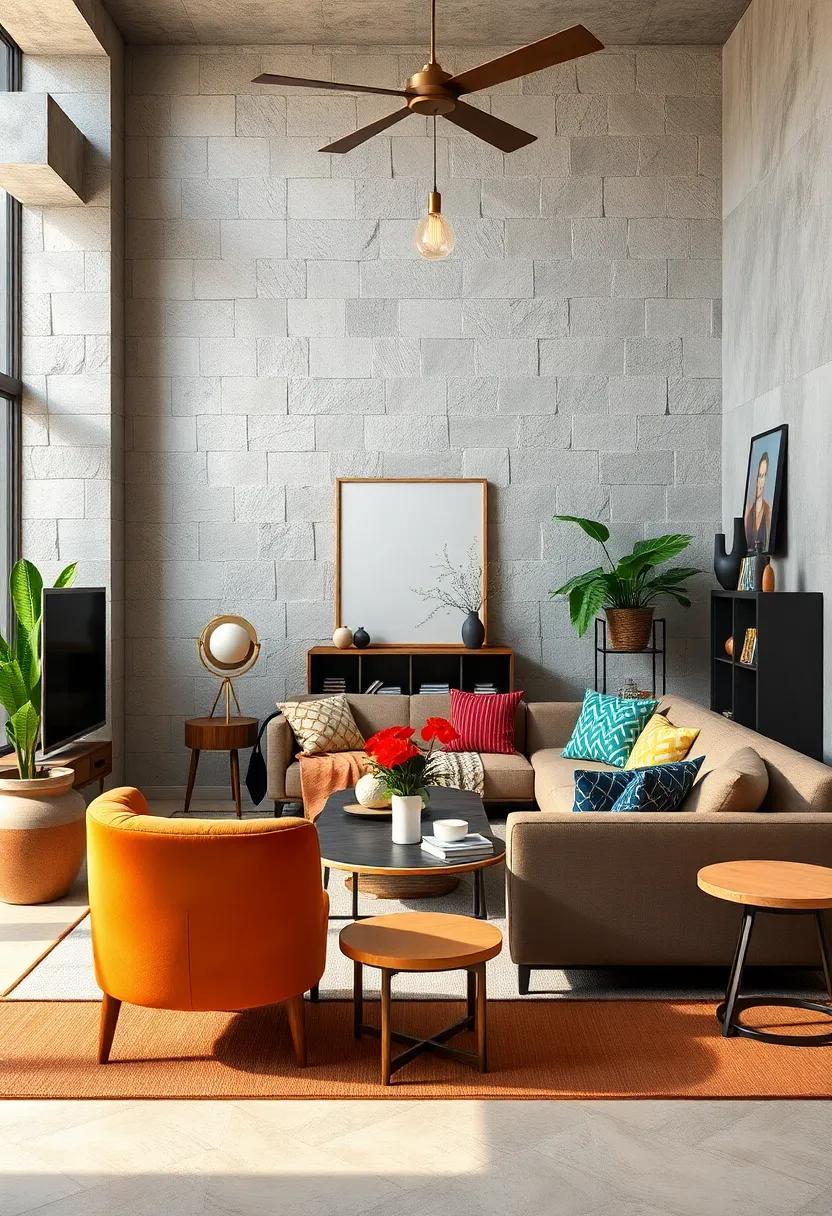
To foster a sense of peace and sophistication in your eclectic spaces, focus on the individuality of each item within your collection.Overcrowding can dilute the impact of your most cherished pieces, so pay attention to how you arrange them. Consider the following strategies to effectively showcase each item:
- Create breathing room: Leave gaps around each piece to allow it to stand out without competition.
- Use varied heights: Incorporate items of different sizes; taller pieces can elevate the arrangement, while shorter ones can provide balance.
- Choose focal points: Designate a few key pieces as the main attractions and arrange supporting elements around them.
- Incorporate negative space: Design intentionally empty zones within your design to attract the eye and foster visual rest.
When evaluating your space, consider an approach that spaces out the items logically and beautifully. A thoughtful layout could resemble the structure shown in the table below:
| Item | Purpose | Space allocation |
|---|---|---|
| Large Artwork | Focal Point | generous margin around |
| Small Sculpture | Accent Piece | Close proximity, minimal clutter |
| Textured Throw | Comfort Element | Strategic placement, not overcrowded |
By implementing these measures, you can avoid the chaos of overcrowding, ensuring that every item speaks for itself while contributing to the room’s overall harmony.
Consistent Hardware: Use similar hardware across different furniture styles for a cohesive touch that links diverse pieces together
When curating an eclectic space, it’s essential to establish visual rhythm through consistent hardware choices. Utilizing similar hardware across diverse furniture styles can forge a subtle connection between disparate pieces, ensuring that they harmonize rather than clash. This concept transcends mere aesthetics; it’s about creating a unified narrative within your design. Consider employing decorative knobs, drawer pulls, or hinges that echo a specific finish—be it brushed brass, antique bronze, or matte black. By repeating these elements, each piece contributes to a cohesive story, even amidst varied shapes, colors, and textures.
To bring this idea to life, think about blending modern accessories with vintage pieces through uniformity in hardware selections. For instance, a traditional wooden dresser can look refreshingly contemporary just by swapping out old knobs for sleek ceramic ones that match a minimalist desk nearby. This enables unexpected synergies, allowing you to create a layered yet balanced look. Here’s a quick reference table to guide your hardware selections:
| Style | Recommended Hardware |
|---|---|
| Modern | Matte Black Handles |
| Rustic | Antique Brass Knobs |
| Industrial | Brushed Steel Pulls |
| Vintage | Porcelain Door Knobs |
Create Visual Rhythm: Arrange decor items in a way that establishes a visual rhythm, leading the eye naturally through the space
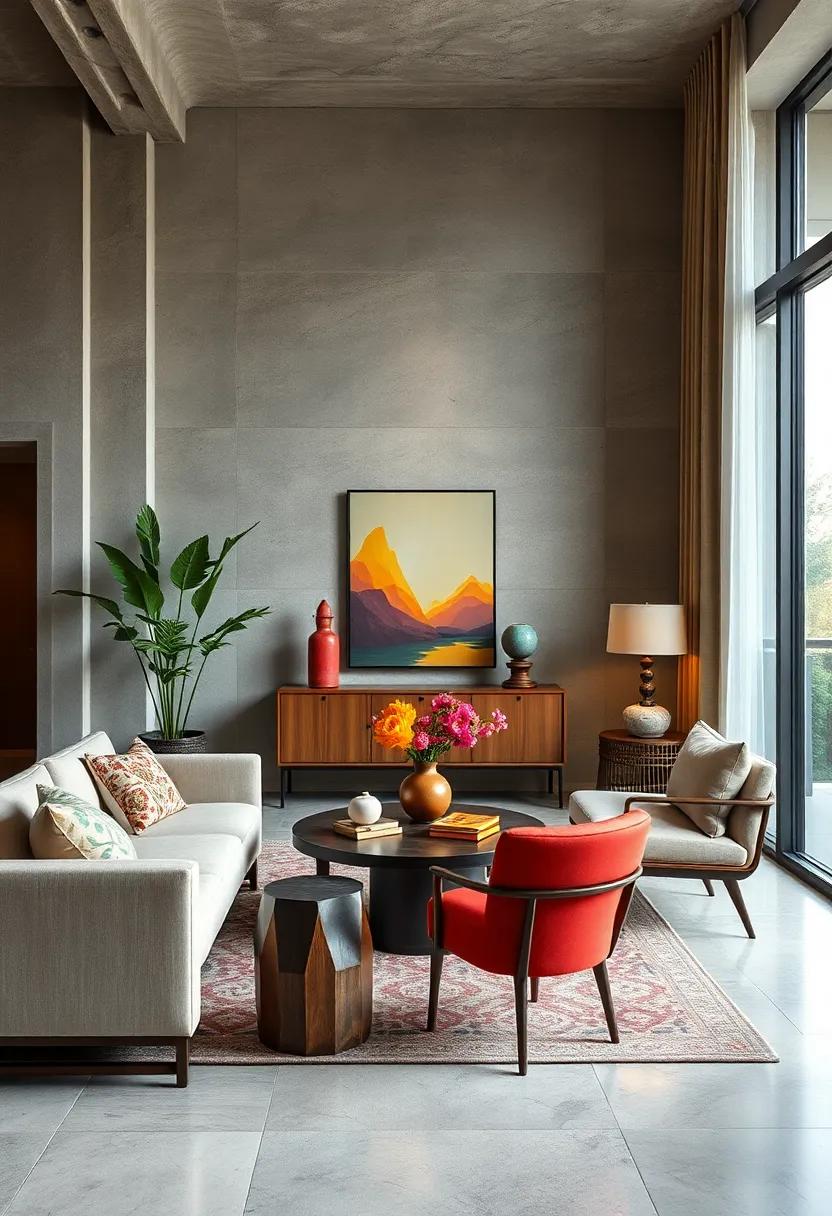
to establish a captivating visual rhythm in your eclectic interior design, consider the heights and proportions of your decor items. Start by arranging your pieces in varying heights to create a movement that draws the eye around the space. For instance, you can place taller items, such as a striking floor lamp or a vase, next to a cluster of smaller objects like books or decorative trinkets. This contrast not only provides interest but also helps guide the viewer’s gaze smoothly from element to element. Layering is key; remember to alternate textured items like woven baskets with shiny ones like glass sculptures to further enhance the dynamic flow.
Incorporate an asymmetrical balance in your layout to keep the space feeling lively yet harmonious. Instead of placing decor items symmetrically,try grouping them in odd numbers or arranging them in a diagonal line across a shelf or tabletop. This arrangement allows for unexpected surprises, encouraging exploration of the space. To make it even simpler,you can utilize a table format to visually showcase how to group items effectively:
| Grouping Style | Description |
|---|---|
| Height Variation | Mix tall,medium,and short items for a layered look. |
| Color Cohesion | Choose a limited color palette to tie disparate items together. |
| Odd Numbers | Group items in threes or fives for visual intrigue. |
| Diagonal Lines | Use diagonals to lead the eye and create a path through your space. |
Diverse yet Intentional Prints: Incorporate prints that vary in scale and style while maintaining an intentional relationship to one another
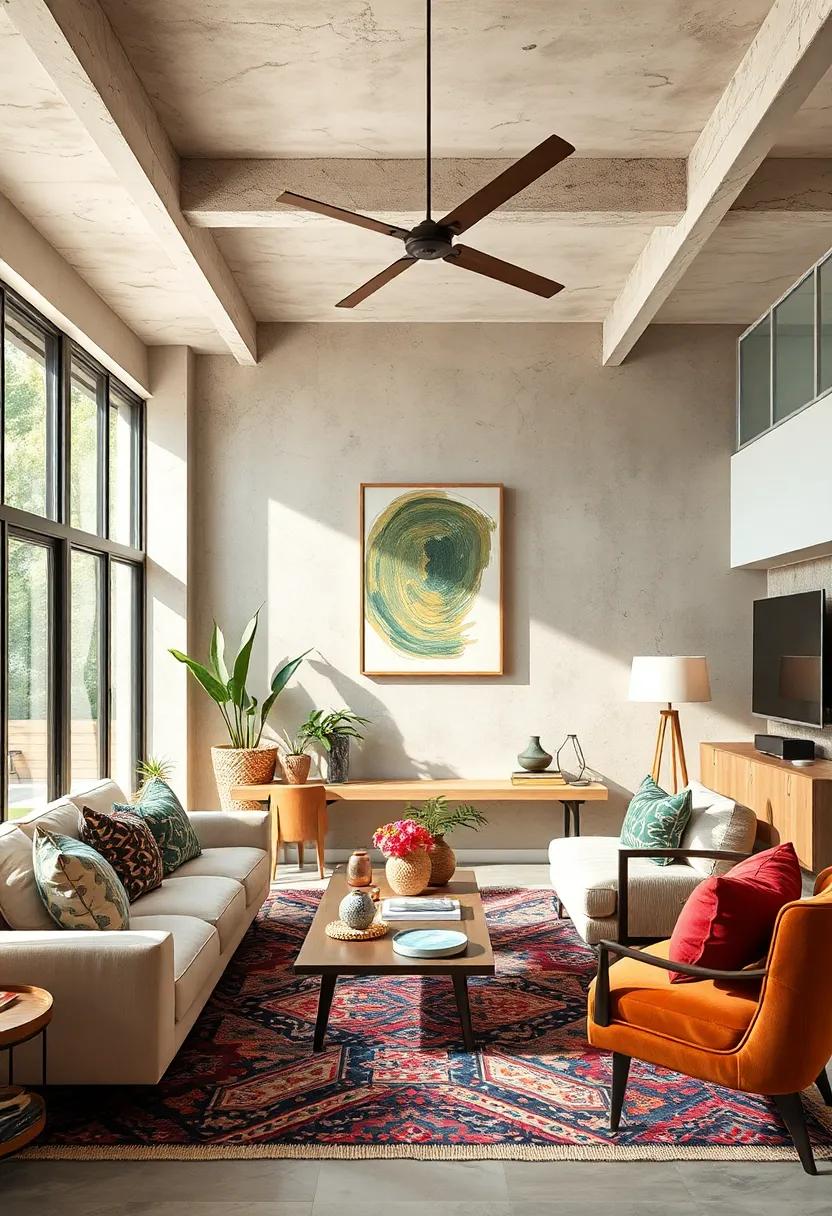
When aiming to create a visually stimulating yet harmonious space, selecting prints that vary in both scale and style is essential. Think about combining large floral patterns with dainty geometric designs—this contrast not only adds depth but also keeps the eye engaged. to achieve a cohesive look, ensure that each print shares a common color palette or theme, which helps to tie different pieces together.As a notable example, a bold tropical print can be beautifully paired with smaller, more subtle botanical motifs that echo its color tones, creating a dynamic interplay that feels curated rather than chaotic.
To maximize the aesthetic potential of these varied prints,consider layering fabrics and textures in thoughtful arrangements. Some key strategies include:
- Use a large-scale print as a focal point, like an oversized area rug or a statement wall tapestry.
- Incorporate medium-sized prints in accent pieces, such as throw pillows or curtains, which can draw in the larger design without competing.
- Integrate small-scale patterns through decorative items like vases or picture frames,adding just the right amount of intricacy to complete the look.
This approach not only enhances visual interest but also encourages a seamless connection among disparate elements. Consider using a simple reference table to clarify how the relationship between different print sizes can elevate your eclectic design:
| Print Size | example Items | Coherent Connection |
|---|---|---|
| Large | Wall Art, Rugs | Sets the tone and primary theme |
| Medium | Cushions, Throws | Enhances the theme without overwhelming |
| Small | Decorative Accents, Tableware | Adds detail and nuance to the overall design |
Play with Symmetry vs. Asymmetry: Use symmetry to create order and asymmetry to introduce excitement, striking a balance that feels harmonious
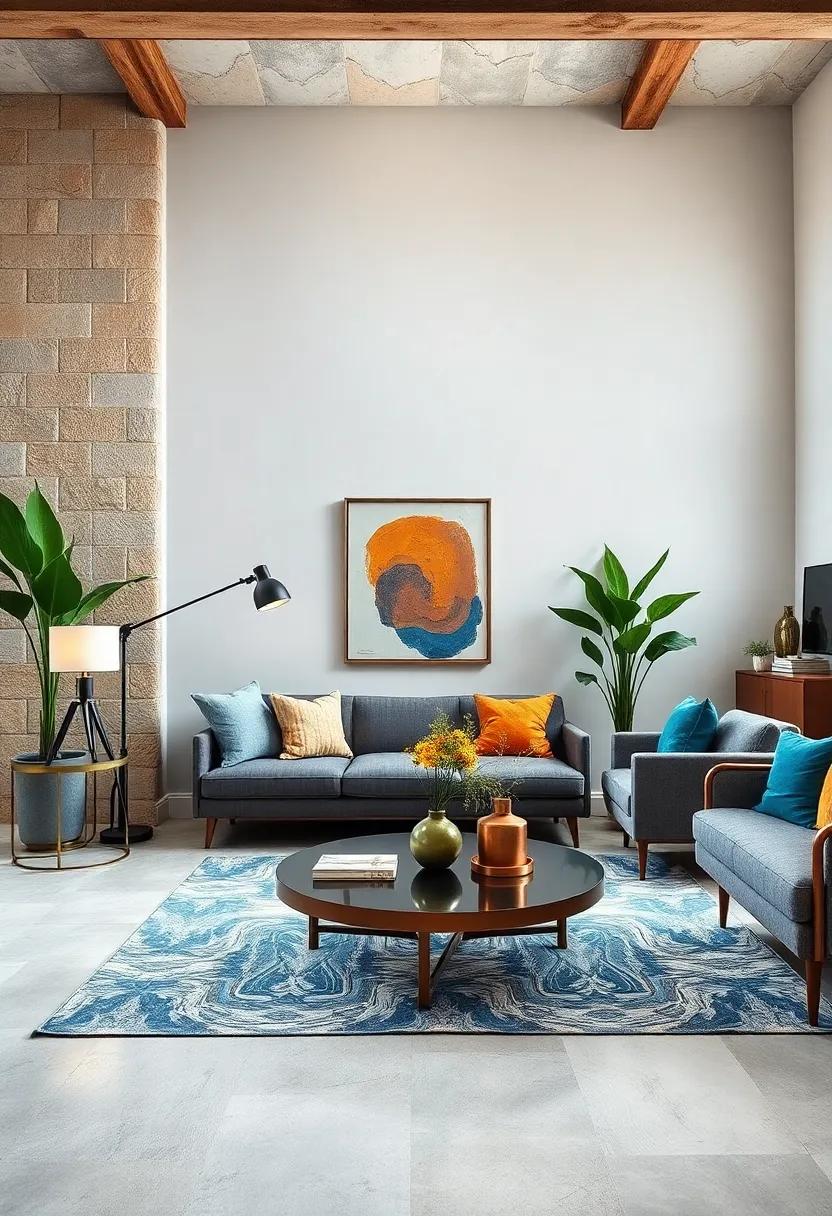
in the world of interior design,the interplay between symmetry and asymmetry offers a dynamic approach to crafting a cohesive aesthetic. Symmetry promotes harmony and a sense of order by creating visual consistency. Organize furniture, art, and decor elements in mirrored arrangements, ensuring equal weight on either side of a central focal point. This can be beautifully illustrated through:
- matching lamps: Place identical table lamps on either side of a sofa for a balanced look.
- Framed art: Hang artworks in pairs or groups of four symmetrically around a central piece.
- Furniture arrangement: Use similar side tables or matching chairs flanking a key piece to reinforce order.
Conversely, introducing asymmetry enhances your space with excitement and intrigue. By thoughtfully placing elements that vary in size, shape, and style, you create visual interest without chaos. Asymmetry doesn’t mean lack of arrangement; rather, it invites creativity. Consider these tactics:
- Layered textiles: Mix different patterns and textures for cushions and throws to add depth.
- Gallery walls: arrange art pieces in an organic layout that plays with height and scale.
- Accent pieces: Select a standout chair or sculpture that contrasts with the rest of the room’s decor.
Invest in a Few Key Pieces: Focus on introducing a few standout items that anchor the design and guide choices in the rest of the room
When it comes to eclectic interior design, the key to achieving a harmonious look lies in selecting a few standout items that serve as the heart of your space. These pieces should embody your personal style and serve as a cohesive thread throughout the room. Think of a striking vintage armchair, an ornate patterned rug, or a bold piece of wall art—all serve as focal points that can guide your choices in colors, textures, and shapes. By centering your design around these key items, you can create a balanced environment that allows for creativity without chaos.
To effectively incorporate these standout pieces, consider how they interact with the surrounding décor. Utilize a color palette inspired by your anchor items to choose complementary furniture and accents. For example, if your statement piece is an emerald green sofa, you might select throw pillows in muted golds and creams to enhance the richness of the sofa while maintaining an eclectic feel. Additionally, layering different materials such as wood, metal, and textiles will contribute to a multidimensional aesthetic that feels both thoughtfully curated and inviting.
Highlight Architectural Features: Showcase unique architectural elements in your home, allowing them to inform and enhance your eclectic design
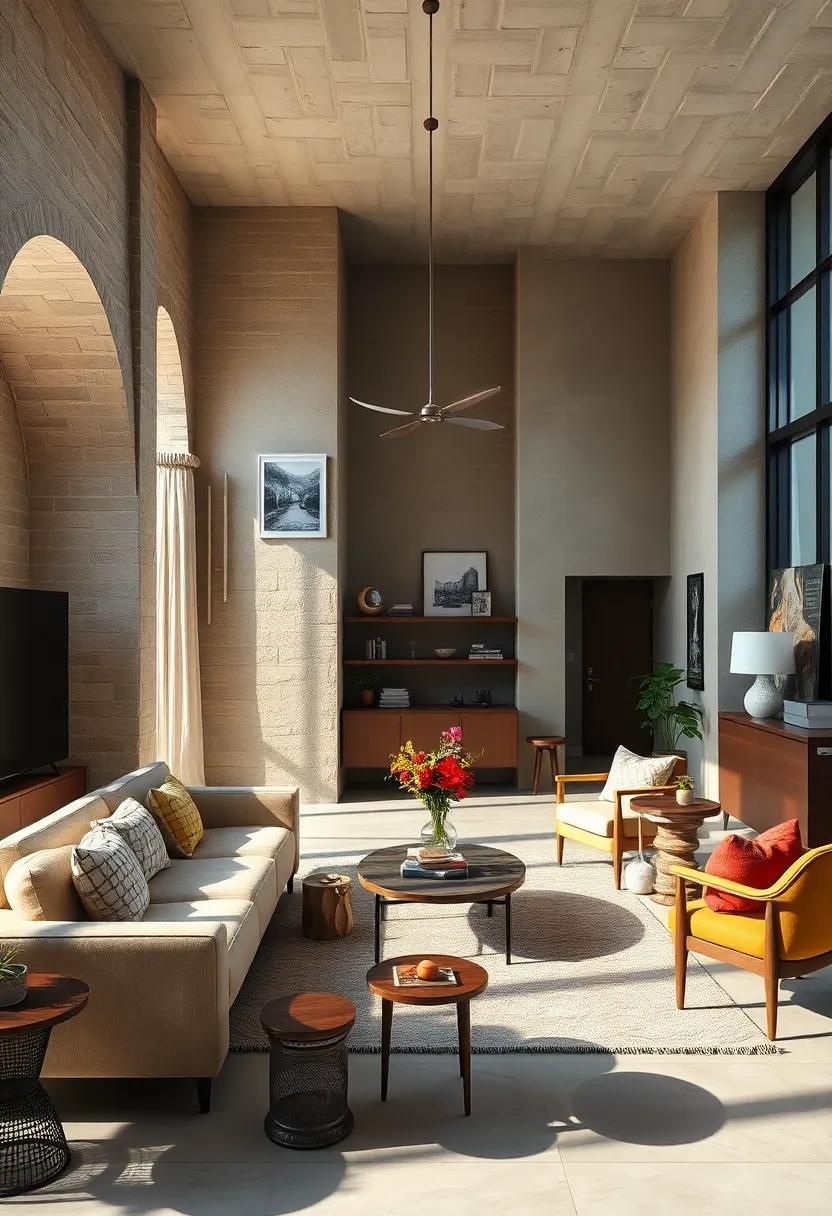
Embracing the unique architectural elements of your home can provide a strong foundation for your eclectic design. These distinctive features serve as focal points that can tie diverse styles together and lend a sense of character to your space. Consider highlighting elements such as:
- Exposed Beams: These can add warmth and rustic charm, making a perfect backdrop for modern furnishings.
- Archways: Use ornate archways as thematic transitions, harmonizing different zones within the home.
- Focal fireplaces: decorate your fireplace with an art piece or a collection of eclectic items that tell a story.
- Built-in Shelving: Use these spaces to display a curated mix of books, plants, and unique decor.
Another way to showcase architectural features is through strategic color and lighting choices. Accentuate these unique elements with paint that highlights their shape, or install lighting fixtures that draw attention to them. consider the following ideas:
- Accent Colors: Use a bold color to paint the wall around an architectural feature to make it pop, offering contrast that supports the eclectic theme.
- Spotlighting: Install spotlights or track lighting that draws the eye to your home’s most interesting features, creating dynamic interplay between elements.
- Texture Play: Add texture to the surrounding areas using textiles, wallpaper, or artwork to further enhance architectural details.
Curate Collections: Display collections thoughtfully, grouping them artfully to create visual interest without overwhelming the space
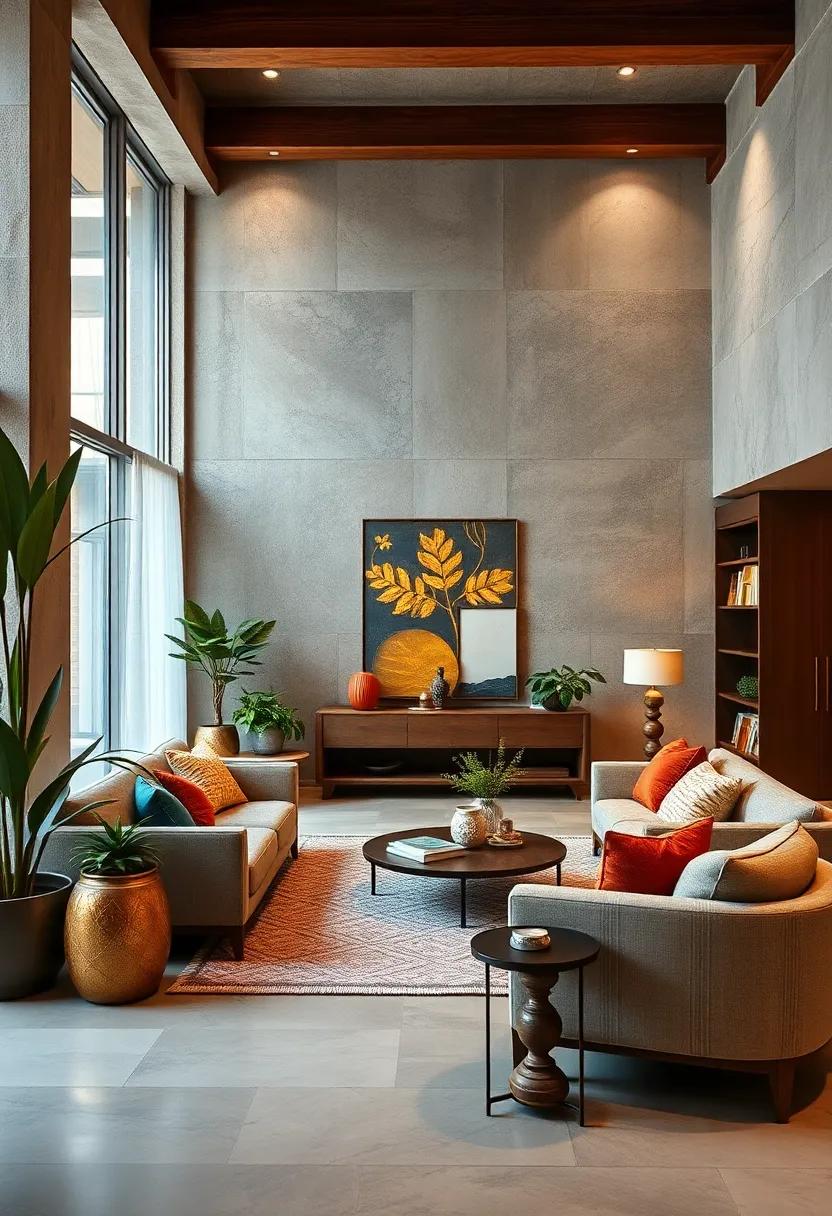
Displaying collections can transform an ordinary space into a dynamic showcase of your personality and interests. Whether it’s a related set of vintage cameras, an array of colorful vases, or a thoughtful selection of art pieces, grouping items in a visually engaging manner invites exploration and delight. Consider creating a thematic arrangement that tells a story. Such as, combine different-sized objects or mix textures and colors that complement each other, thereby enhancing the overall aesthetic without overwhelming the viewer. Display smaller items on trays or within shadow boxes, and group larger pieces together to draw the eye, creating a cohesive flow throughout the space.
Utilize shelves, mantels, or console tables strategically to maintain balance and harmony. Incorporate a variety of heights; this could be achieved with stackable books, decorative pedestals, or plants that add a touch of greenery. Consider the use of color blocking or contrasting schemes to segment different collections, establishing visual boundaries that keep the space organized. Below is a simple table illustrating some effective grouping strategies:
| Category | Examples | Arrangement Tips |
|---|---|---|
| Art | Framed prints,sculptures | Cluster similar styles; create a gallery wall |
| Books | Novels,coffee table books | Stack horizontally and vertically for variety |
| Glassware | Vases,bottles,goblets | Mix clear and colored pieces; consider light reflection |
| Travel Memorabilia | postcards,souvenirs,maps | Use a dedicated shelf; layer items for depth |
evolve Over Time: remember that eclectic design is about evolution; be open to changing your decor as new pieces inspire your journey
Embracing an eclectic style means embracing change. Your space is a canvas that reflects your interests, travels, and the connections you’ve made over time. As you encounter new inspirations—whether through visiting friends’ homes, art exhibits, or even nature—let those experiences guide your decor evolution.Don’t hesitate to swap out a piece or modify arrangements; allowing the flow of fresh ideas can breathe new life into your space. Remember, eclectic design thrives on personal growth and varied influences.
Consider a curated approach to introducing new elements into your home. Maintain a balance by following these principles:
- Rotate decor: Regularly change out accessories or artwork based on the seasons or your mood.
- Explore new styles: Attend workshops or view online content to discover new design trends that resonate with you.
- Be mindful of scale: Ensure that new additions harmonize with existing pieces in terms of size and shape.
- Collect memories: Each new item can tell a story; integrate meaningful finds that contribute to the narrative of your home.
| Inspiration Sources | Potential Decor Changes |
|---|---|
| art exhibits | Change wall art or sculptures |
| Travel souvenirs | Add personal treasures to a display |
| Friends’ homes | Incorporate different textiles, like throws or cushions |
| Nature | Introduce plants or earthy tones |
Closing Remarks
As we wrap up our journey through the vibrant world of eclectic interior design, we hope these 29 tips inspire you to create a space that resonates with your unique personality and style. Remember, crafting harmony in an eclectic space is about balancing contrasts, celebrating diversity, and letting your creativity shine. Embrace the unexpected and allow your home to tell a story that is distinctly yours.
Whether you’re mixing vintage finds with contemporary pieces or layering textures and colors,trust your instincts and have fun along the way. Your home is a canvas—paint it with the strokes of your experiences and passions! Now, gather your eclectic treasures, let your imagination roam free, and watch as your living space transforms into a harmonious haven that reflects the beautiful tapestry of your life. Happy decorating!
As an Amazon Associate I earn from qualifying purchases.
